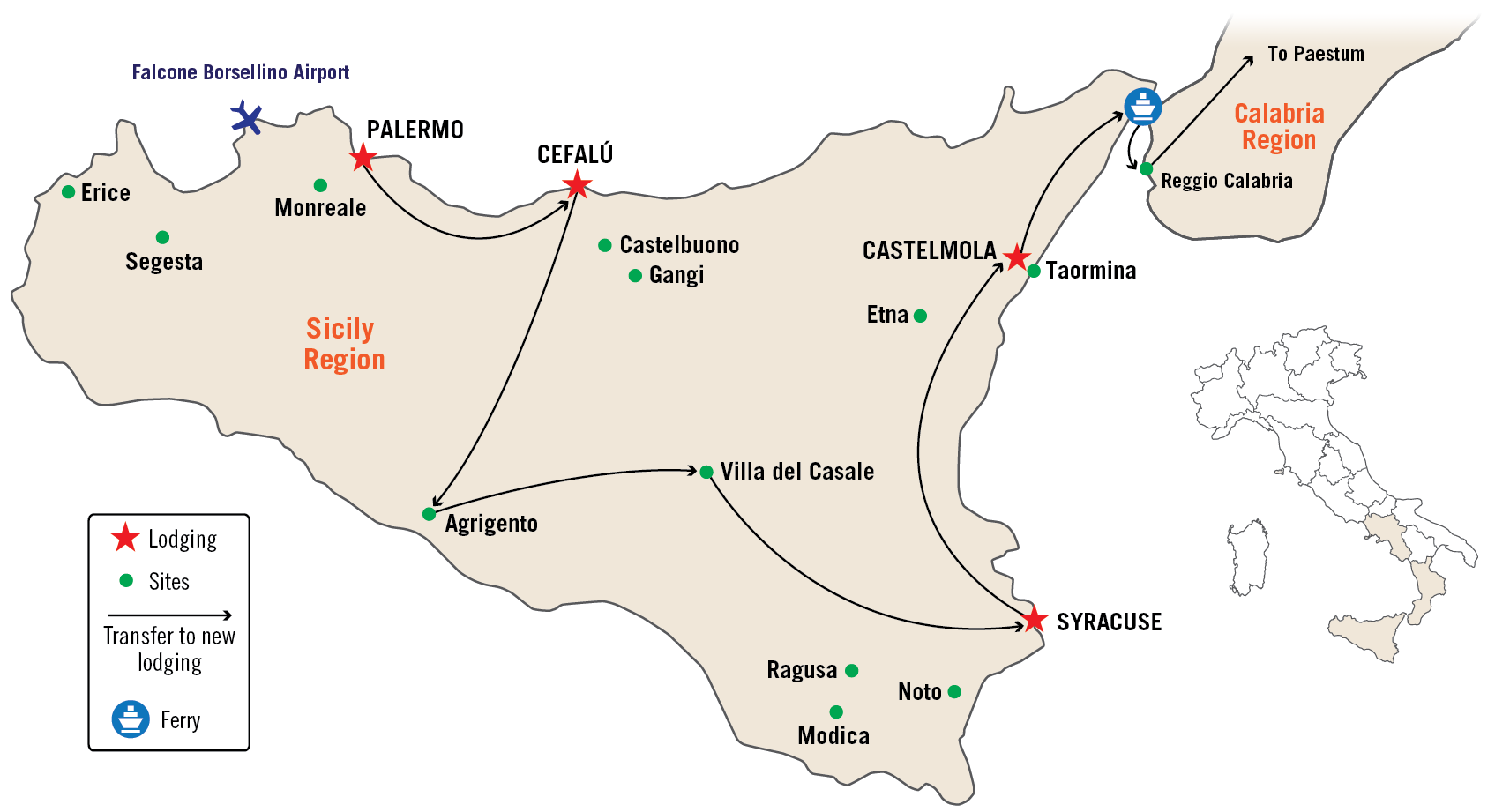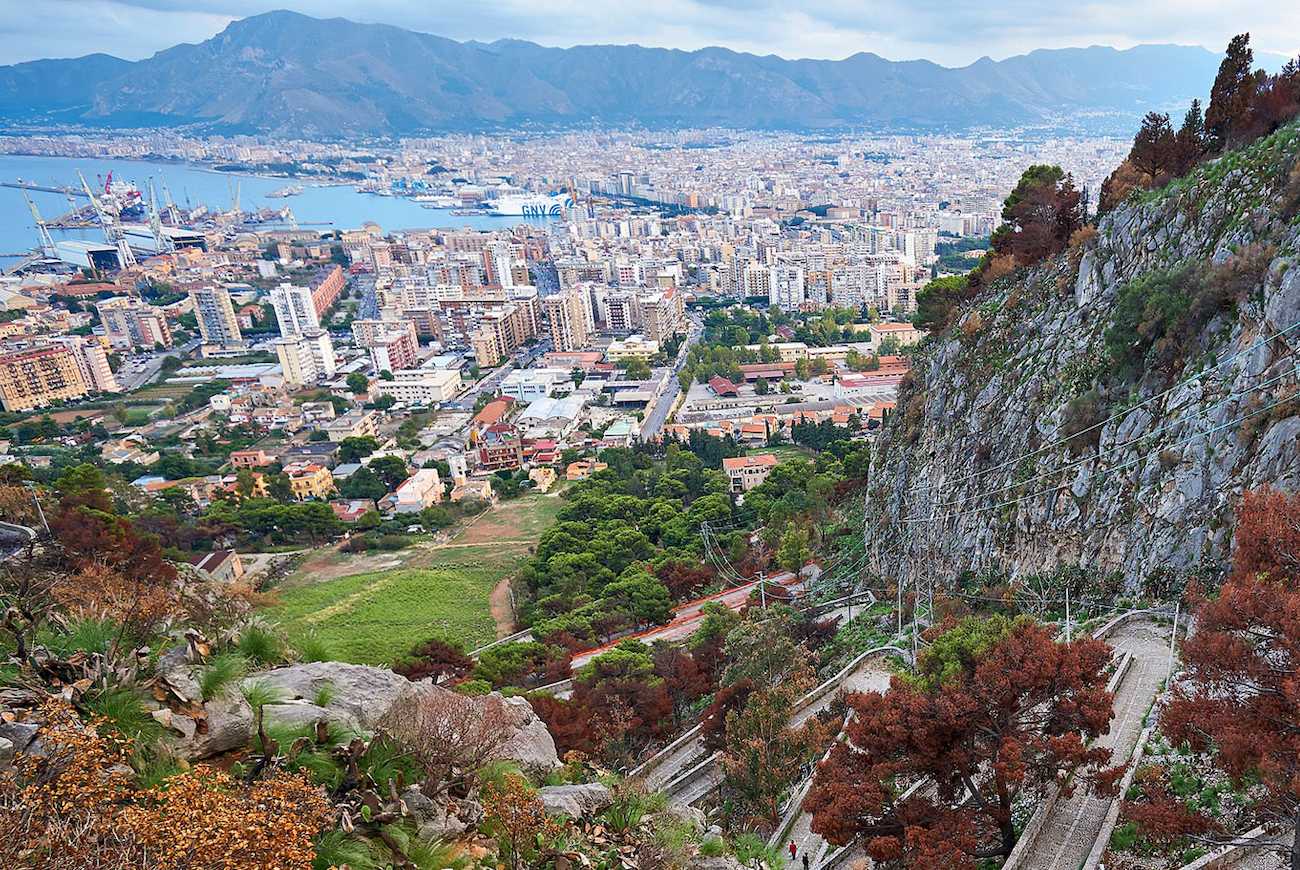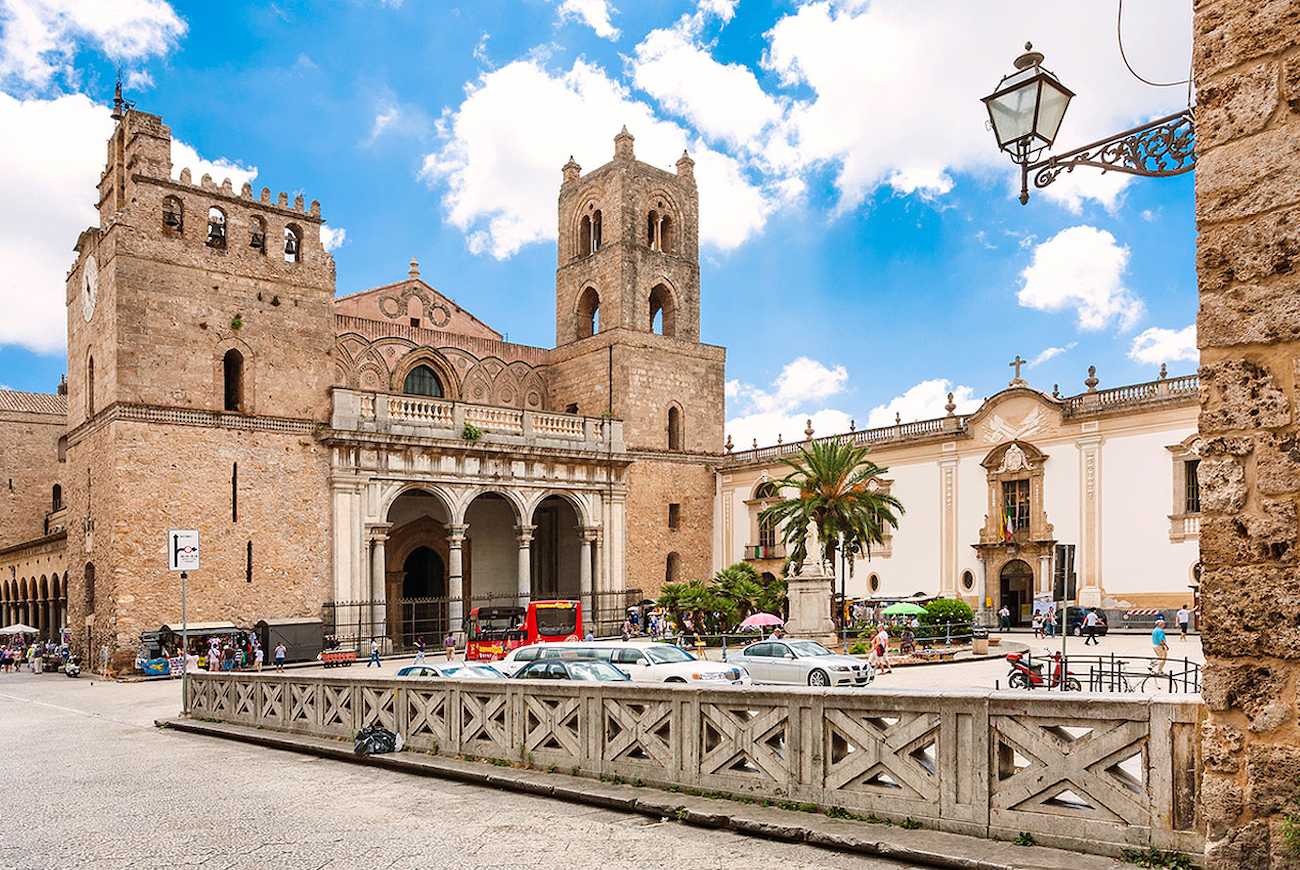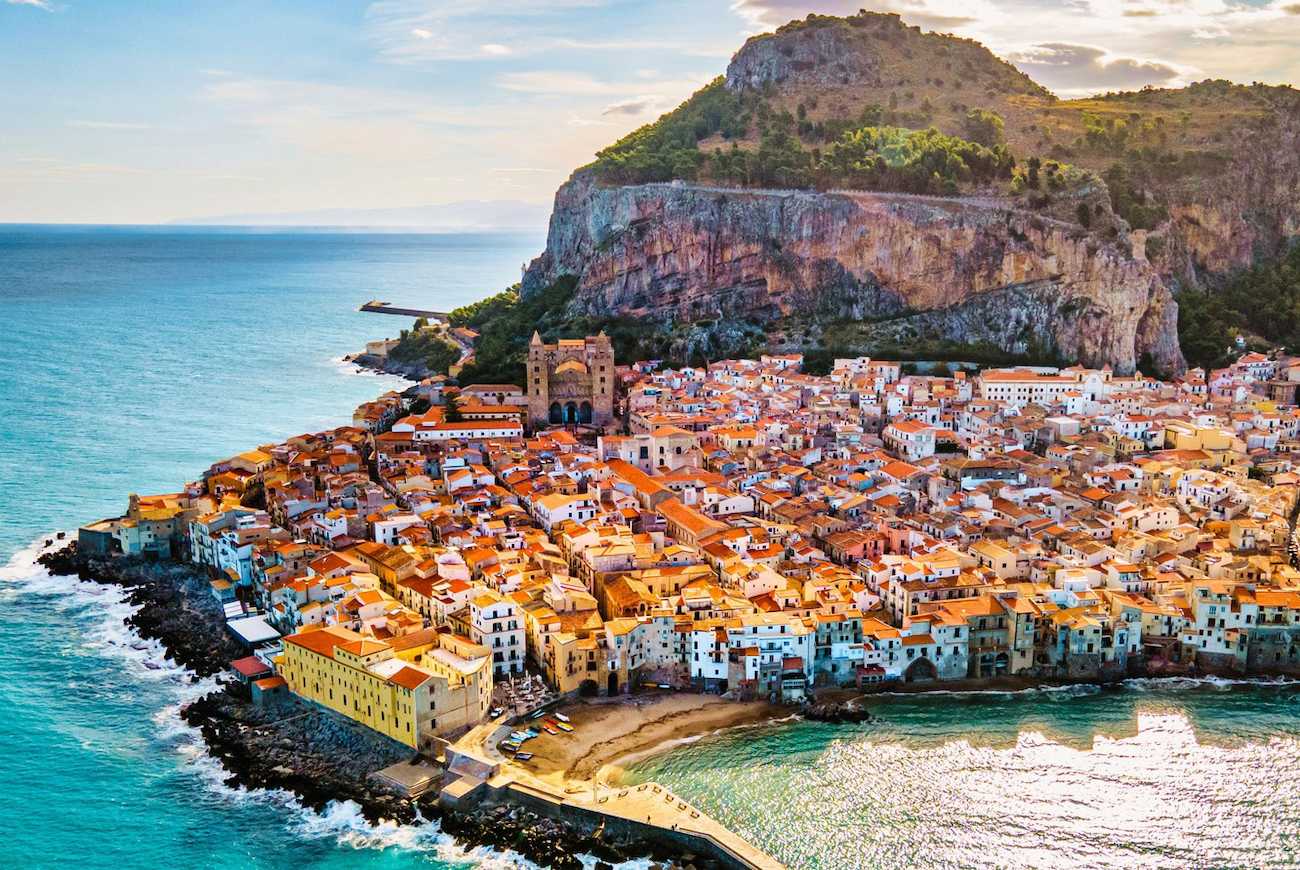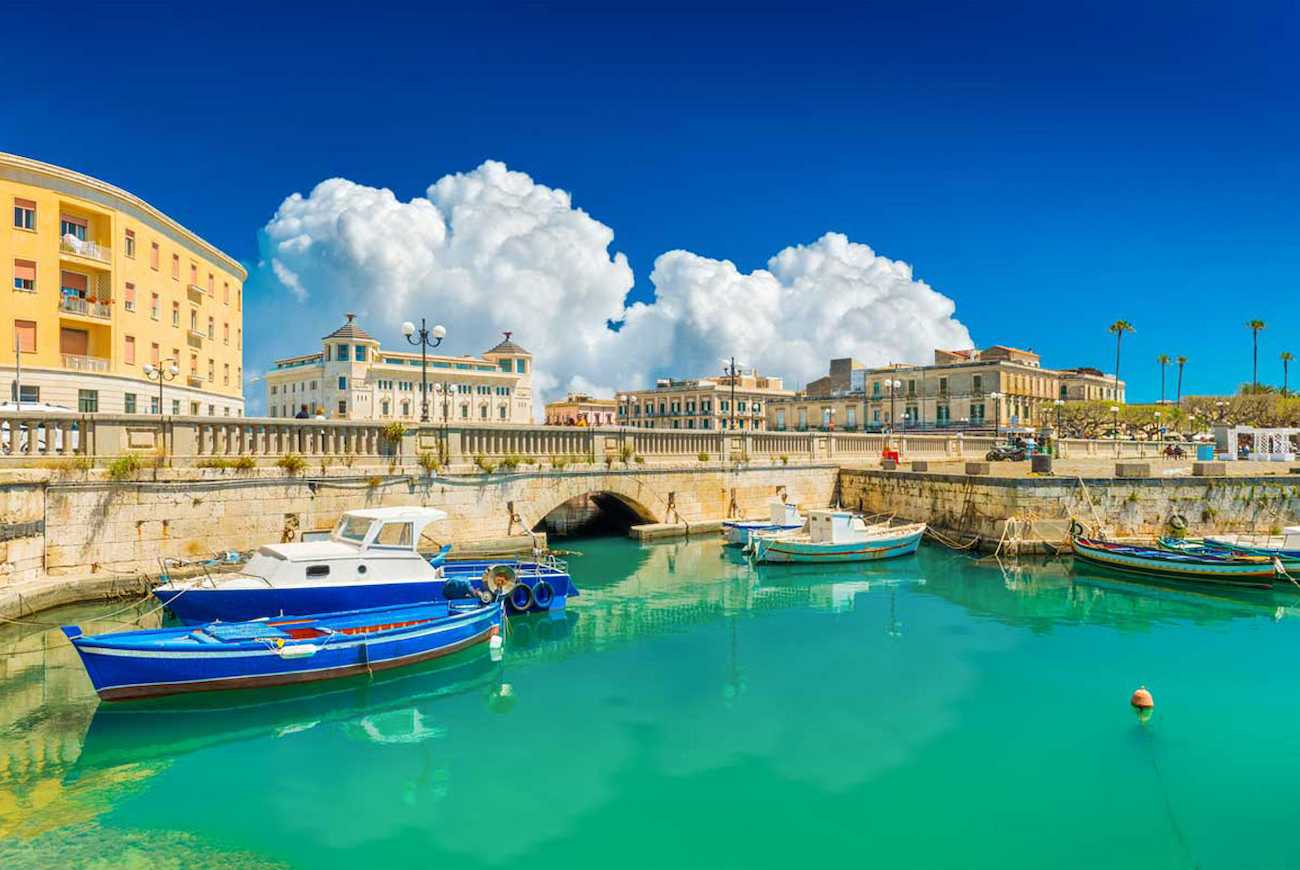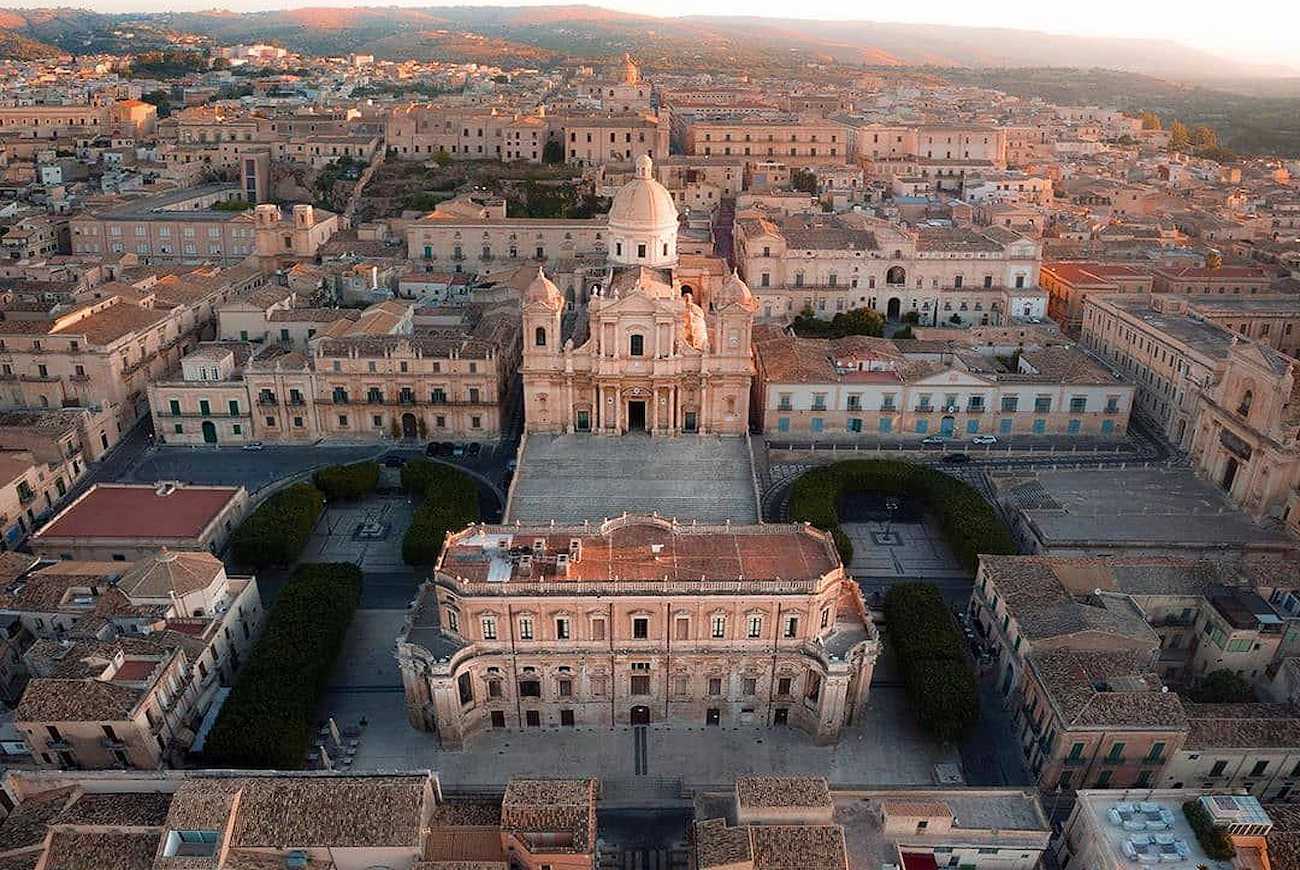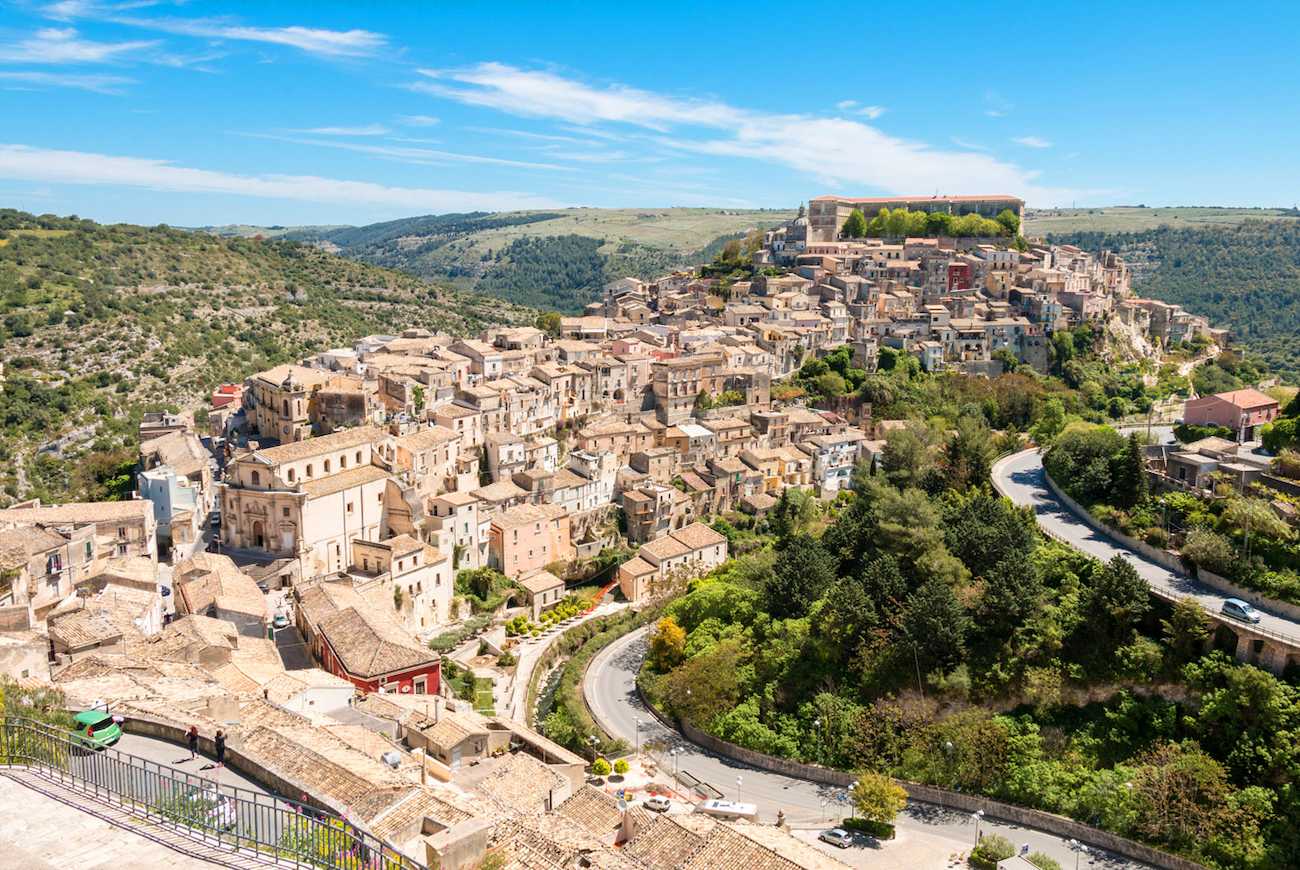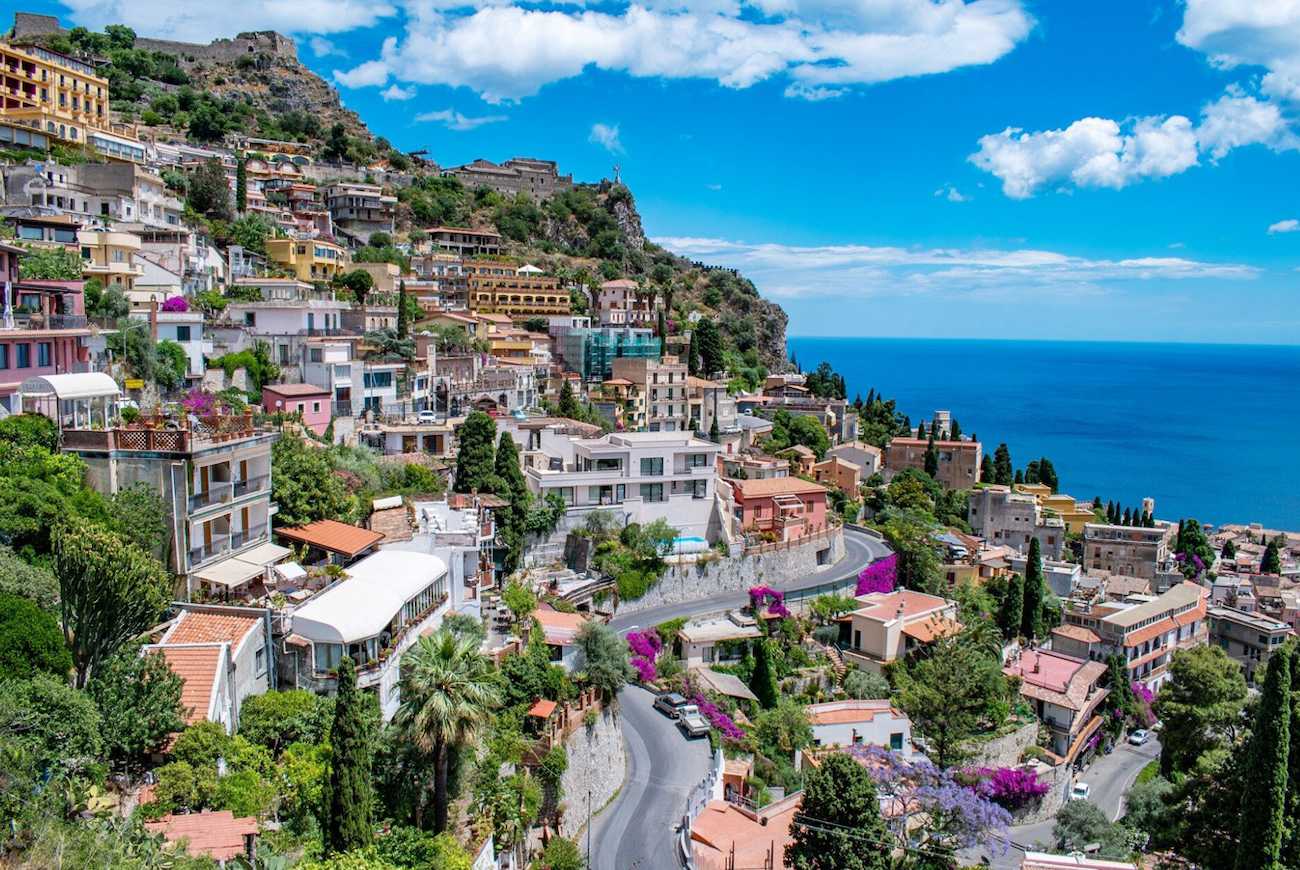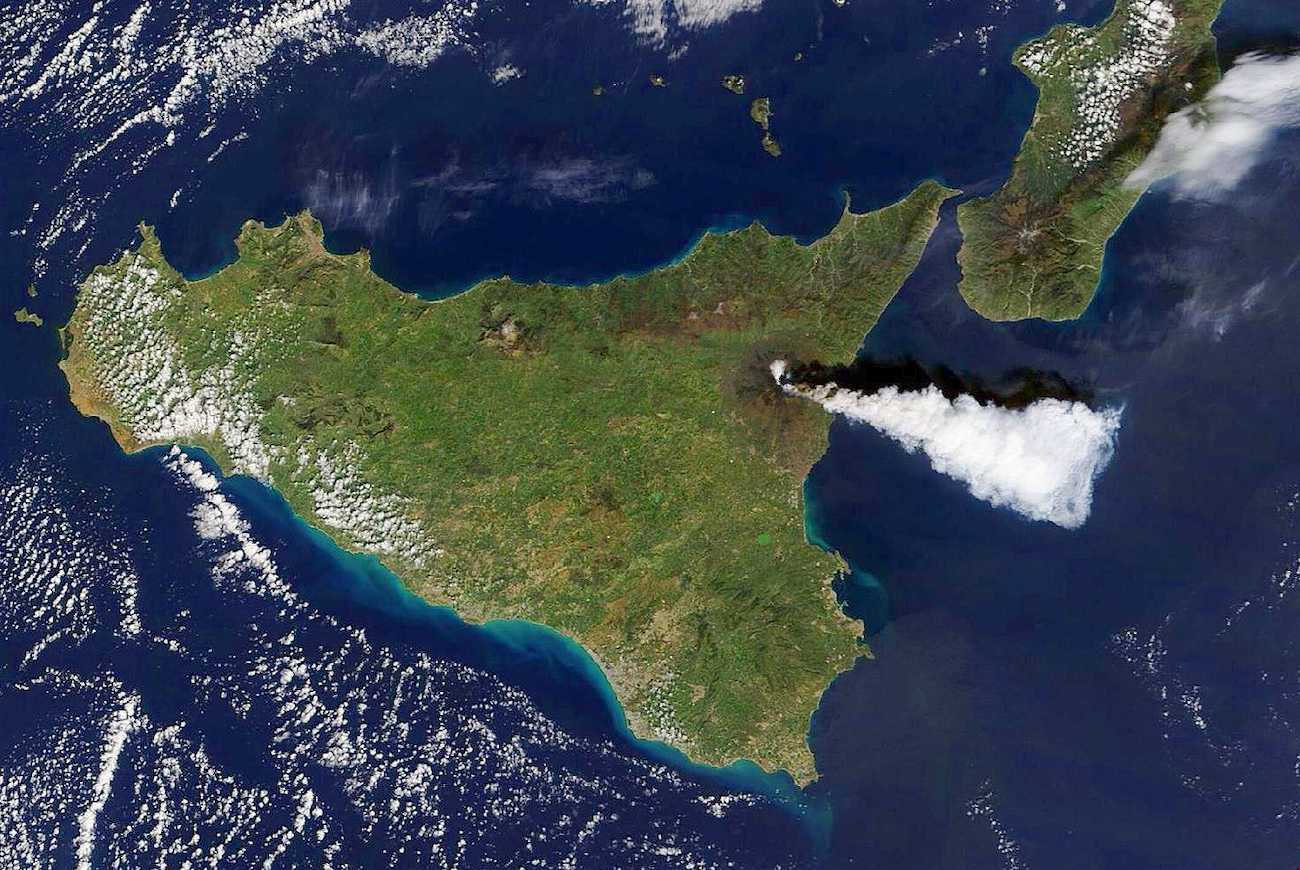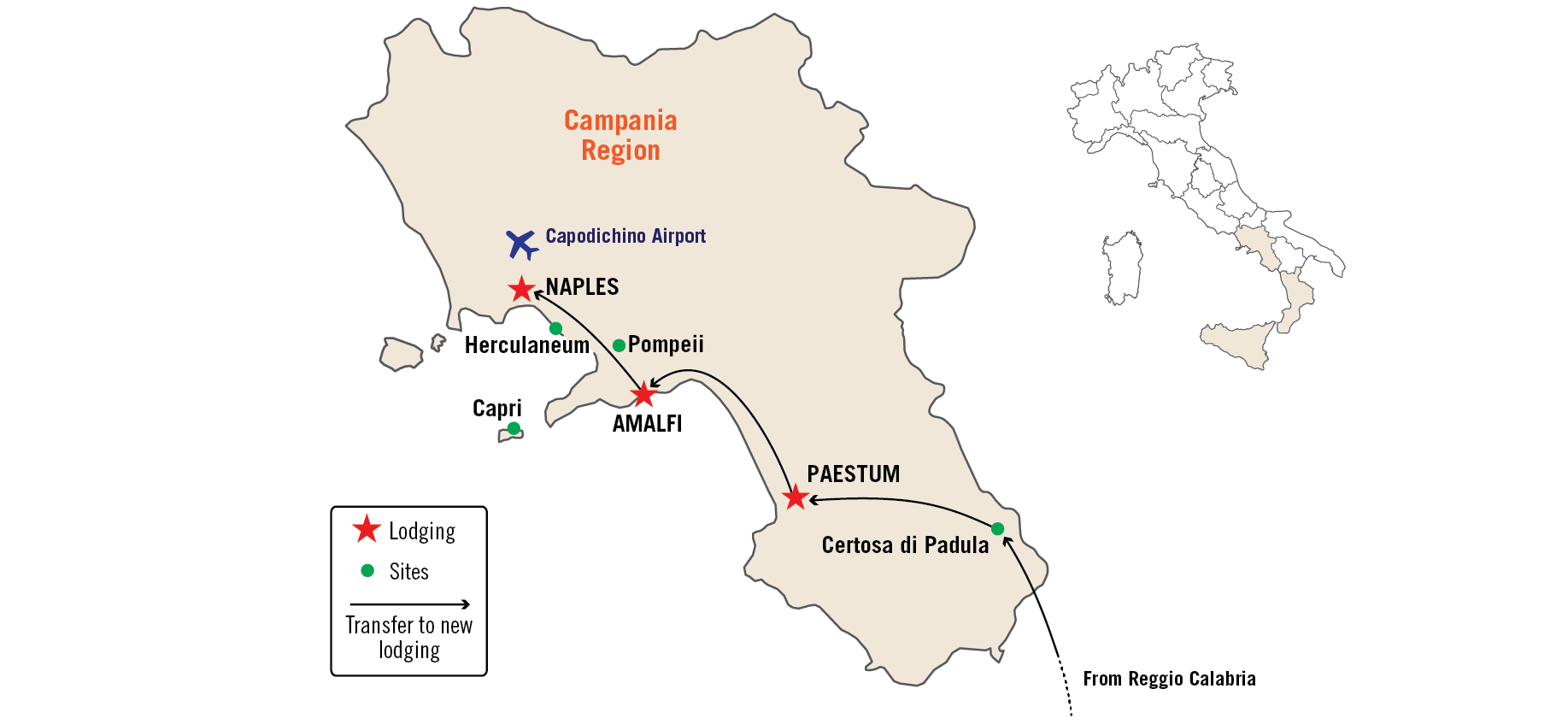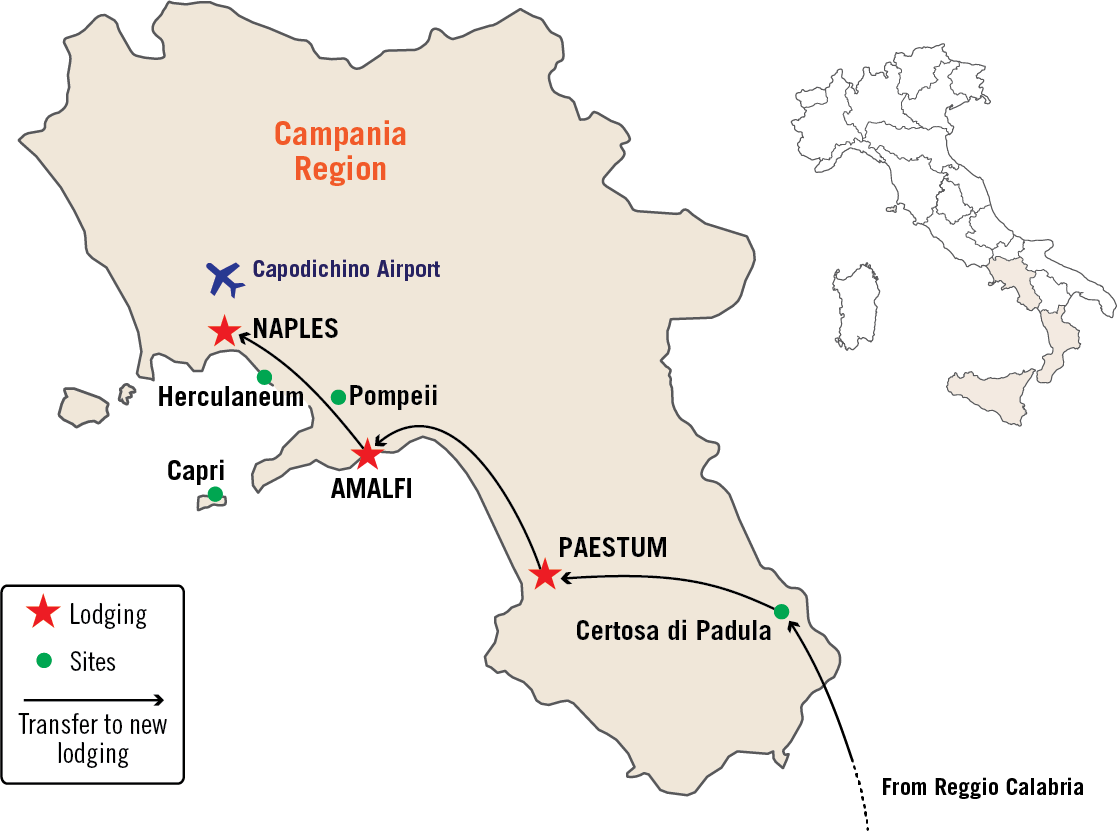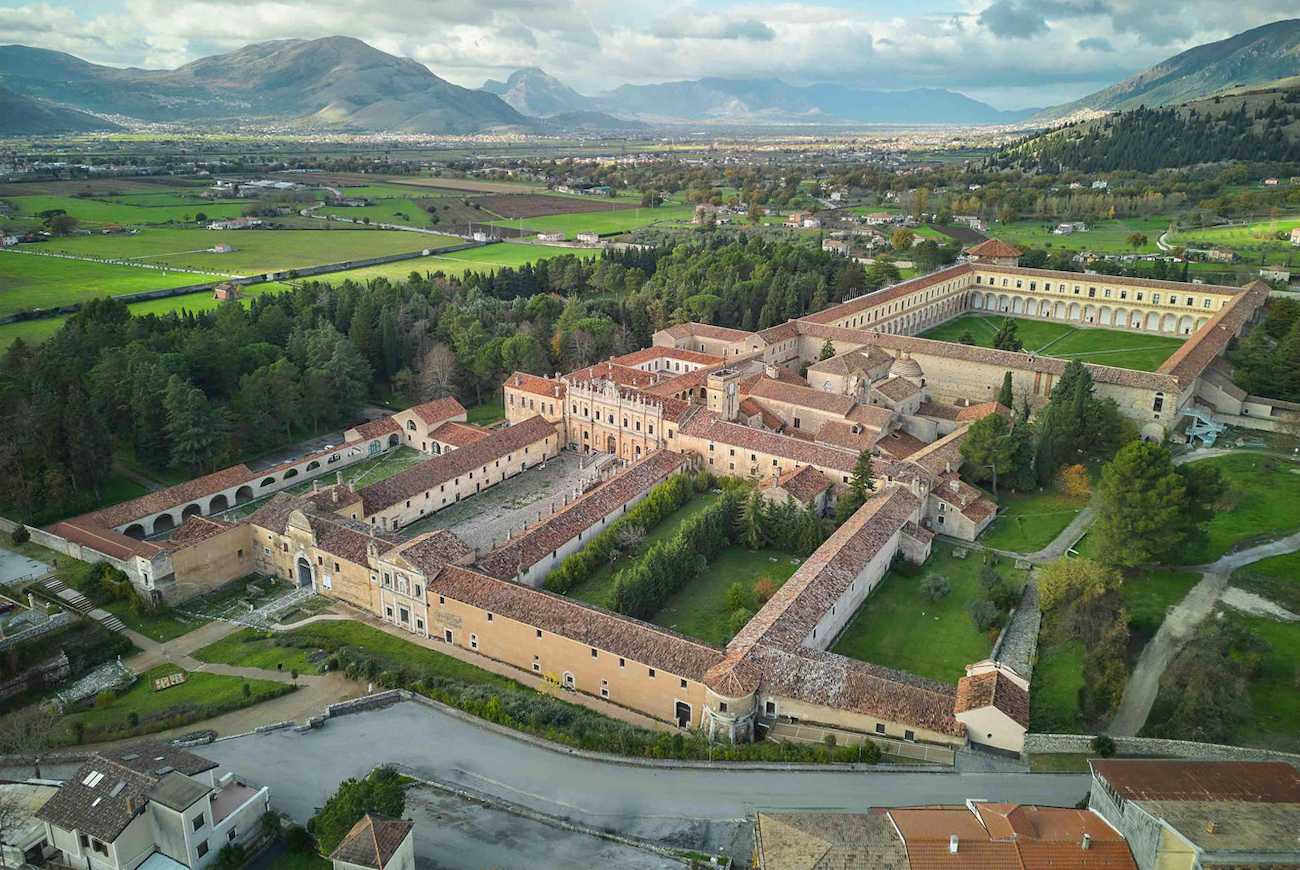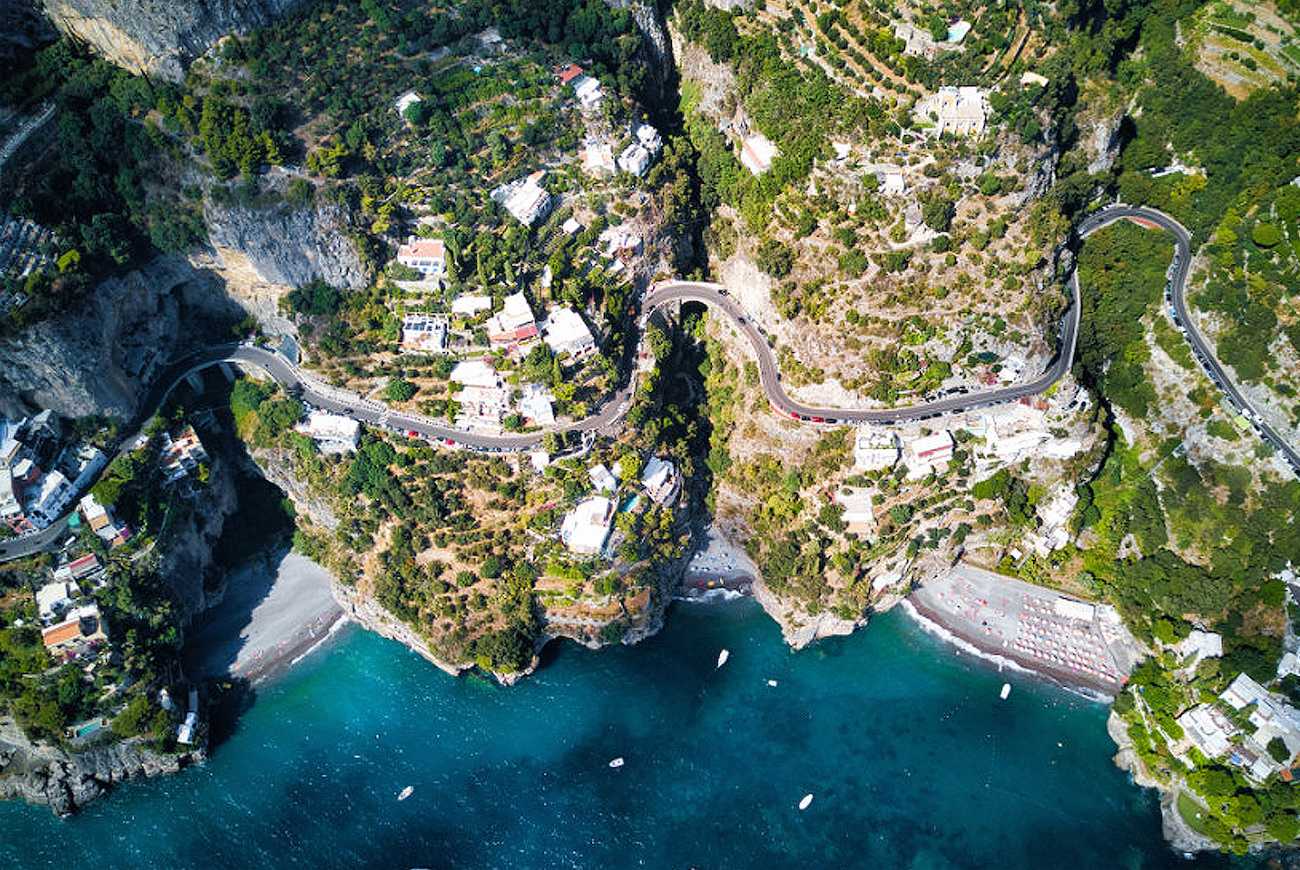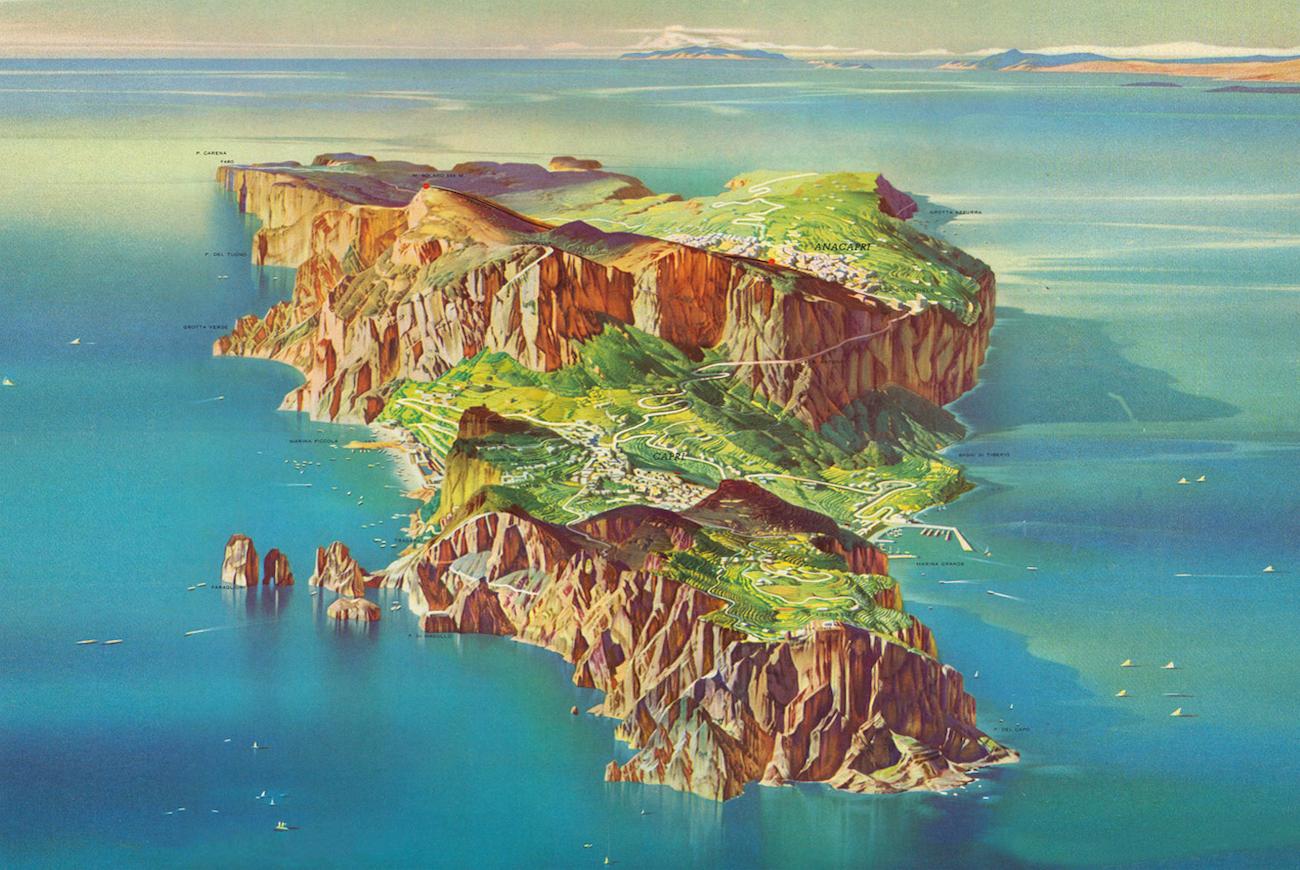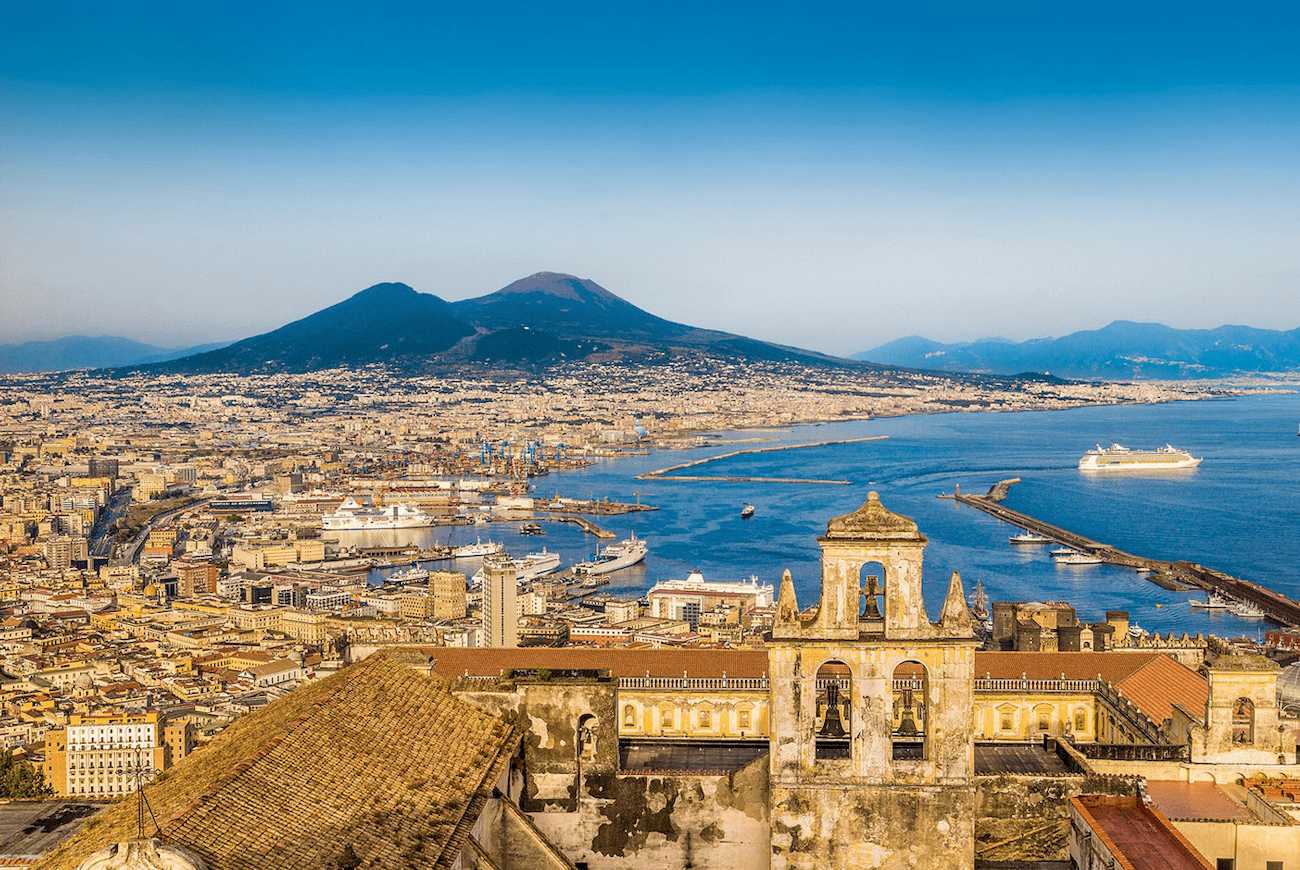~ SICILY & AMALFI COAST ~
Ben arrivati! Welcome to Palermo!
Airport pick up.
30-minute drive to Palermo.
Hotel check-in (4 night stay).
Options available according to arrival time.
Welcome Aperitif.
Dinner in the historic center.
Palermo
Situated on one of the most beautiful promontories of the Mediterranean, Palermo is a fascinating destination with its colorful history, varied architecture, distinct gastronomy, and excellent weather. Founded in the 7th century BC by Phoenicians, it was later conquered by Romans, Arabs, Normans and Spaniards, who have left deep artistic and cultural traces throughout the city. Palermo is a treasure chest full of precious jewels waiting to be discovered and encapsules many splendid points of interest that have been designated UNESCO World Heritage Sites. Greatly affected by the bombings of World War II and the earthquake of 1968, Palermo has successfully transitioned into a modern and vibrant city, the bustling capital of Sicily.
The Abatellis Museum houses the iconic fresco, Il Trionfo della Morte (The Triumph of Death). The most striking element is the horse, depicted with a flowing mane. This fearsome instrument of inevitable fate is painted in a style that would have resonated with Pablo Picasso. In fact, Picasso himself claimed to have drawn inspiration from this very work for his famed painting, Guernica.
Arab-Norman Itinerary
Morning
- Walking guid toedur:
- Cattedrale di Palermo, part of the Arab-Norman Palermo route and the UNESCO World Heritage along with the Cathedrals of Cefalù and Monreale.
- Palazzo dei Normanni, also known as the Royal Palace, has been a seat of power in Sicily for centuries.
- Cappella Palatina, the chapel located inside the Norman Palace, with its rich decorations, reveals the perfect union among different styles: Byzantine, Islamic, and Romanesque.
Afternoon
- Free time or optional activities:
- Stroll Via Maqueda, also known as Strada Nuova, an important pedestrian street that together with the most ancient one of Palermo, Cassaro, represents the main axis of the historic center.
- Enjoy a 360 ° view of the city from the Santa Caterina terrace and then visit the church confectionery to taste and discover the ancient traditions of conventual pastry.
- Palazzo Mirto, a perfect example of the residences of the Palermo Aristocracy.
- Chiesa del Gesù, known also as Casa Professa, is one of the most beautiful churches of the baroque era. Is like a treasure box, the austerity of its facade starkly contrasts with the detailed marble decorations inside.
- Palazzo Abatellis, a palace in Gothic-Catalan style, now used as a museum and housing a marvelous collection of sculptures and paintings.
The Arab-Norman Style
This style is characterized by the union of two opposing worlds: the Arab - Muslim and the Norman - Catholic one. After two and a half centuries of Arab domination, Palermo became one of the richest and most important cities of its time and many palaces, mosques, minarets, gardens and fountains were built. Unfortunately today there is no relevant monument belonging to the Muslim era because, with the arrival of the Normans, the buildings were modified making it impossible to distinguish their ancient function. Despite this, the Normans decided to emulate the great splendor of the Arabs and recognized the remarkable skill of the Muslim workers: from this union, the Arab-Norman style was born. The Arab-Norman itinerary, declared a “World Heritage Site” by Unesco, includes nine religious and civic structures: two palaces, three churches, a cathedral, and a bridge in Palermo, as well as the cathedrals and Cloisters of Cefalù and Monreale.
Cattedrale
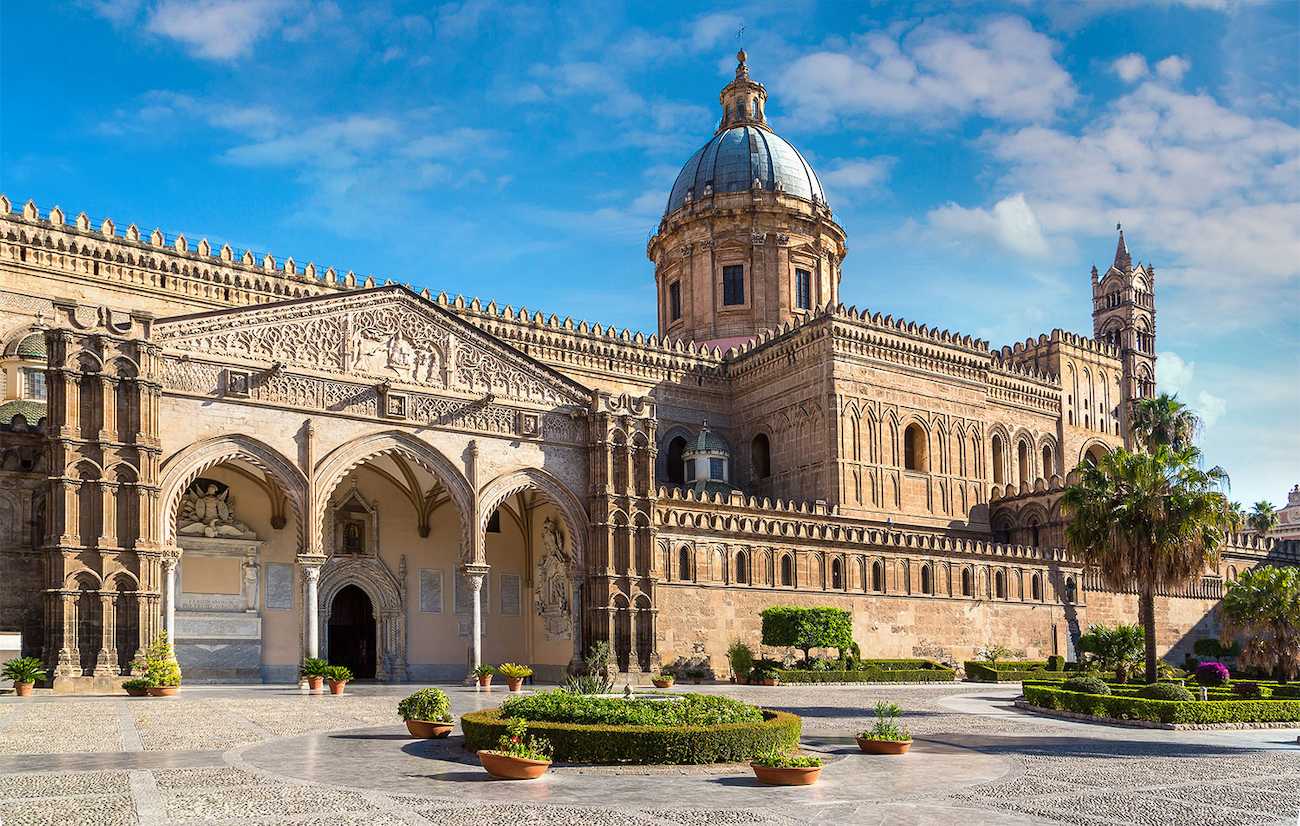
The Palermo Cathedral, dedicated to the Assumption of the Virgin Mary, is one of the world’s most eclectic ecclesiastical architecture due to the diversity and the mixture of styles unique in the world: Arab, Norman, Byzantine, Swabian, Romanesque, Gothic, Renaissance and Baroque. Erected in 1185 on the area of an earlier IV century Byzantine basilica, destroyed by the Vandals and then turned into a mosque by the Saracens after their conquest of the city in the 9th century. It was reconsecrated as a Christian church in 1072. Outside, in the southern side of the building, the current access, is the beautiful large portico in Gothic-Catalan style built around 1465 and the corner towers built between the 14th and the 15th centuries. The present neoclassical appearance is due to alterations done over two decades at the end of the 18th century.
Palazzo dei Normanni
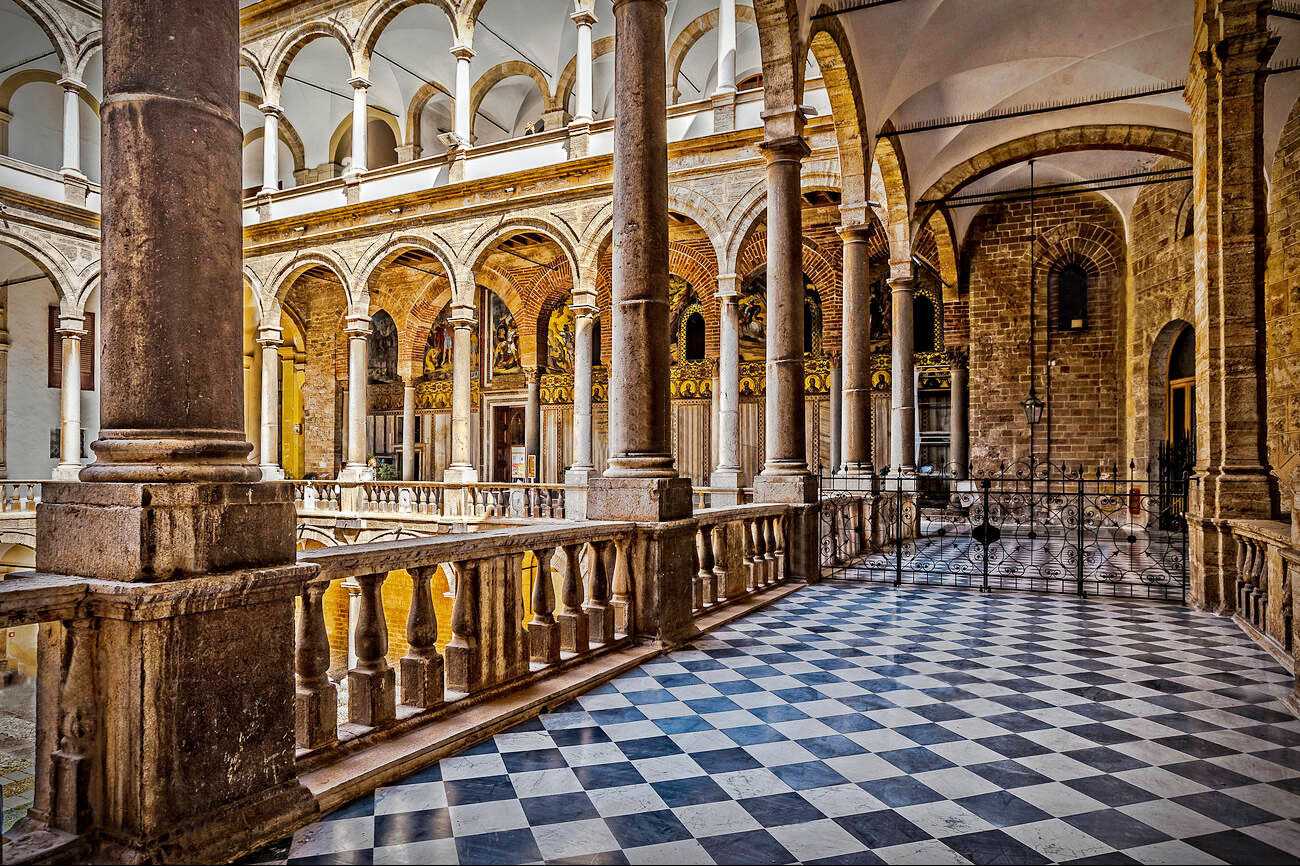
The Royal Palace, known as the Norman Palace is the oldest royal residence in Europe. Its construction began during a period of Islamic domination in the 9th century with many Arab architectural elements still visible in vaults, basements and the foundations. The Norman sovereigns, who conquered Sicily in 1072, chose this palace as their main residence, expanding and transforming the building into a complex, multi-purpose center that expressed the full power of the monarchy. King Roger II added the famous Cappella Palatina to the Palazzo Reale in 1132, making it the focus of the palace and one of the most visited sites in Palermo.
Cappella Palatina
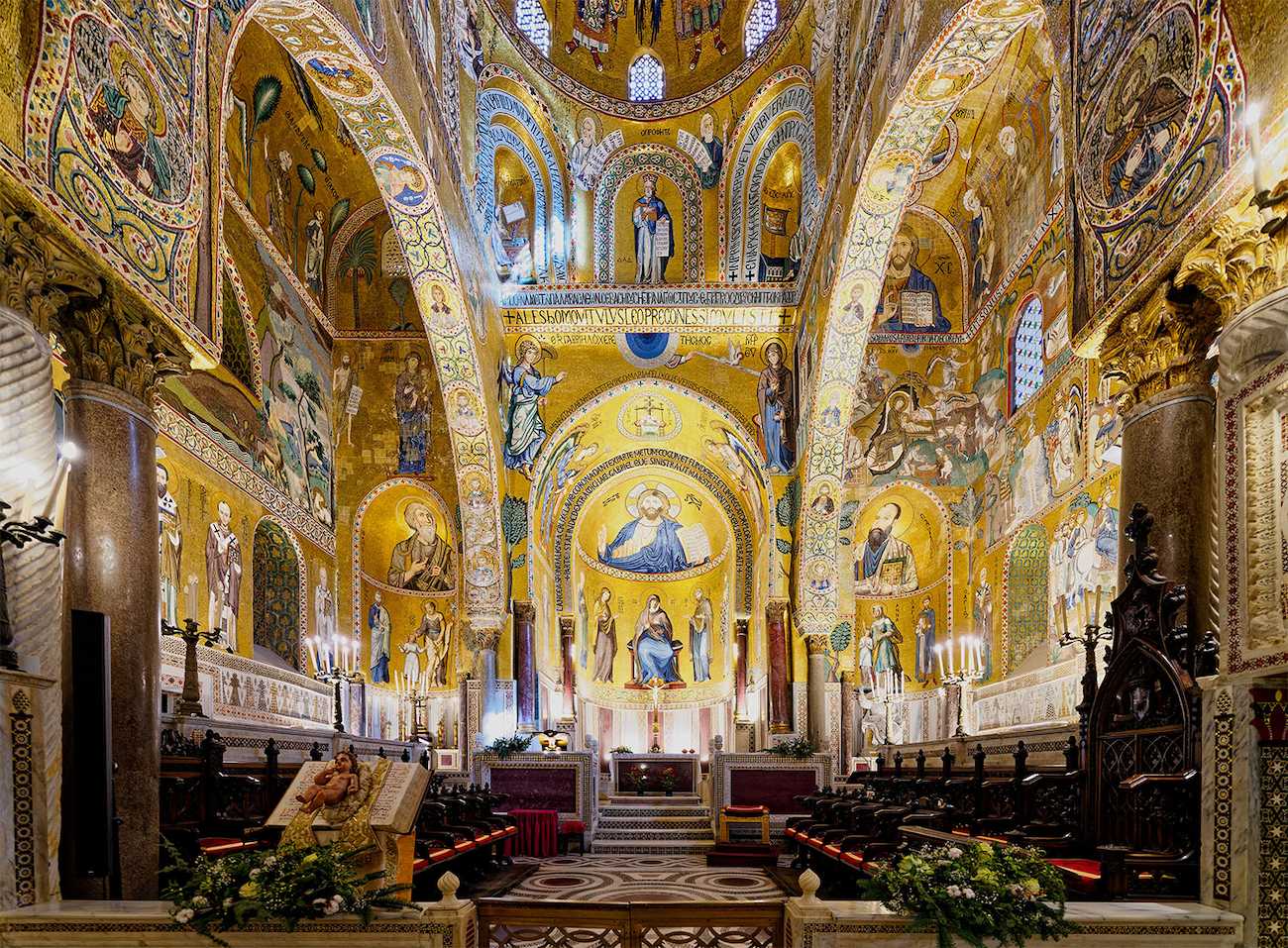
The chapel is a splendid example of Arab-Norman art located inside the Norman Palace. The amazing interior is covered in glittering 12th century Norman-Byzantine mosaics, with an extraordinary depth and vividness achieved by gold-backed tesserae and silver mosaic tiles. The interior is capped by a 10th century Arab honeycomb stalactite wooden ceiling. The ceiling imagery is painted with biblical scenes as well as scenes of Arab and Norman court life, full of symbols and allegories. The texts in the chapel are written in Latin, Greek and Arabic, exemplifying the social-cultural syncretism between Western, Byzantine and Islamic cultures in Sicily.
Churches, Custodians of Art Treasures
Morning
- Walking guided tour in the historic center:
- Santa Caterina, a synthesis of Sicilian Baroque, Rococo and Renaissance styles church.
- Santa Maria dell’Ammiraglio, the church also known as Martorana, was named after George of Antioch, Syrian Christian admiral and principal minister of King Roger II.
- Fontana Pretoria, considered one of the most important examples of high Renaissance architecture in Sicily. It was built in Florence, but was sold and reassembled in Palermo. Between the 18th and 19th centuries, the fountain was considered a sort of depiction of the corrupt municipality and for this reason and because of the nudity of the statues, the fountain became known as Fontana della Vergogna (Fountain of Shame).
- Quattro Canti (Four Cantons) represent the center of baroque Palermo. The site is the intersection of two major pedestrian streets and the facades of the four palaces are concavely curved, and decorated with statues and fountains symbolizing the four seasons.
Afternoon
- Guided tour at Teatro Massimo, the biggest theater in Italy and one of the largest in Europe.
- Free time or optional activities listed on the previous day (DAY 2).
- Drive to Mondello known for its namesake beach and lively area dominated by an art nouveau pavilion at the end of a pier.
Santa Caterina di Alessandria
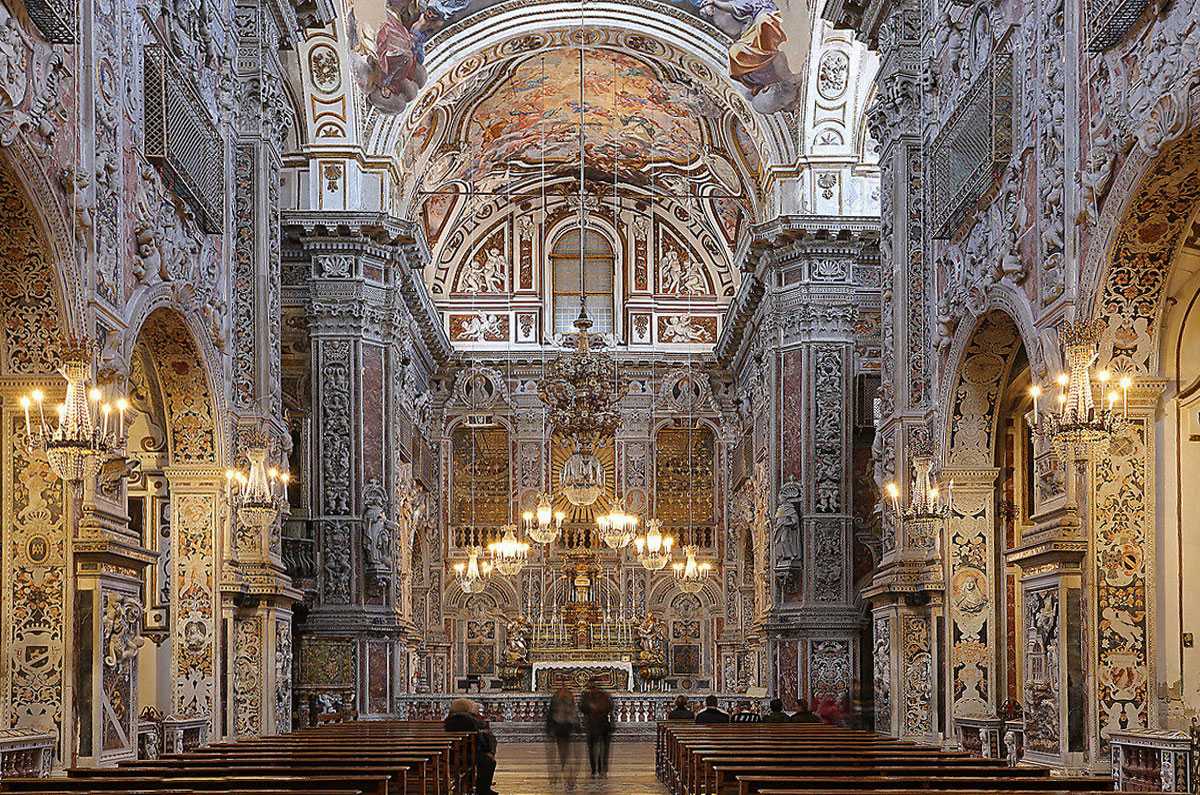
The church of Saint Catherine of Alexandria was established by the Dominican Order in 1311. The convent offered assistance to the weakest and most disadvantaged women such as prostitutes, but by 1532 it turned markedly to the cloister of the noble classes, making necessary a widening of the building. Between 1566 and 1596 the church was rebuilt and consecrated in 1664. The marble inlay panels at the base of the pilasters of the central nave are of the highest quality, especially the episode of Jonah and the whale, and the Sacrifice of Isaac. In 2014 it ceased to be a convent and in 2017 it became a museum. Inside the monastery there’s the confectionery selling pastries made with the nun’s old recipes.
Santa Maria dell'Ammiraglio (Martorana)
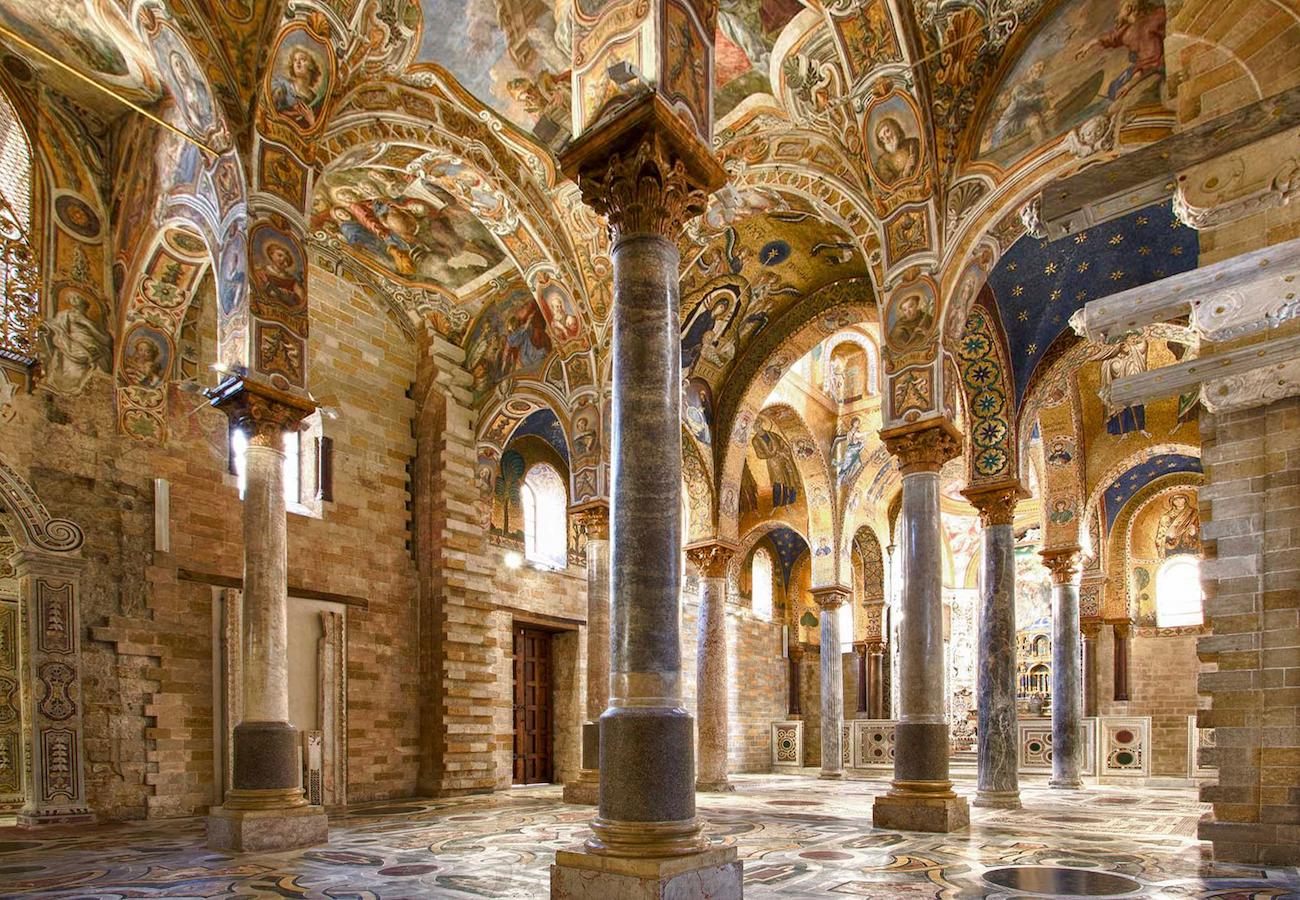
The church is located in Piazza Bellini in the historic center in front of the church of Saint Catherine of Alexandria and next to San Cataldo with its typical red domes. It is one of the finest examples in Italy of Byzantine churches of the Middle Ages. This church is known for its mosaics and is a blend of various architectural and artistic styles spanning several centuries. Today, even though La Martorana belongs to the Catholic Church, the liturgy is officiated in the ancient Greek language with spiritual traditions of the Orthodox Church. The name Martorana comes from the founding abbess, Eloise Martorana, of a Benedictine nunnery associated with the church in 1194. These nuns invented the traditional marzipan sweets shaped like fruits. They made small oranges with colored almond paste and hung them in the trees to impress King Charles V, who visited the convent and its garden in 1537. Now famous, these treats are available in candy shops all around Palermo and Sicily.
Teatro Massimo
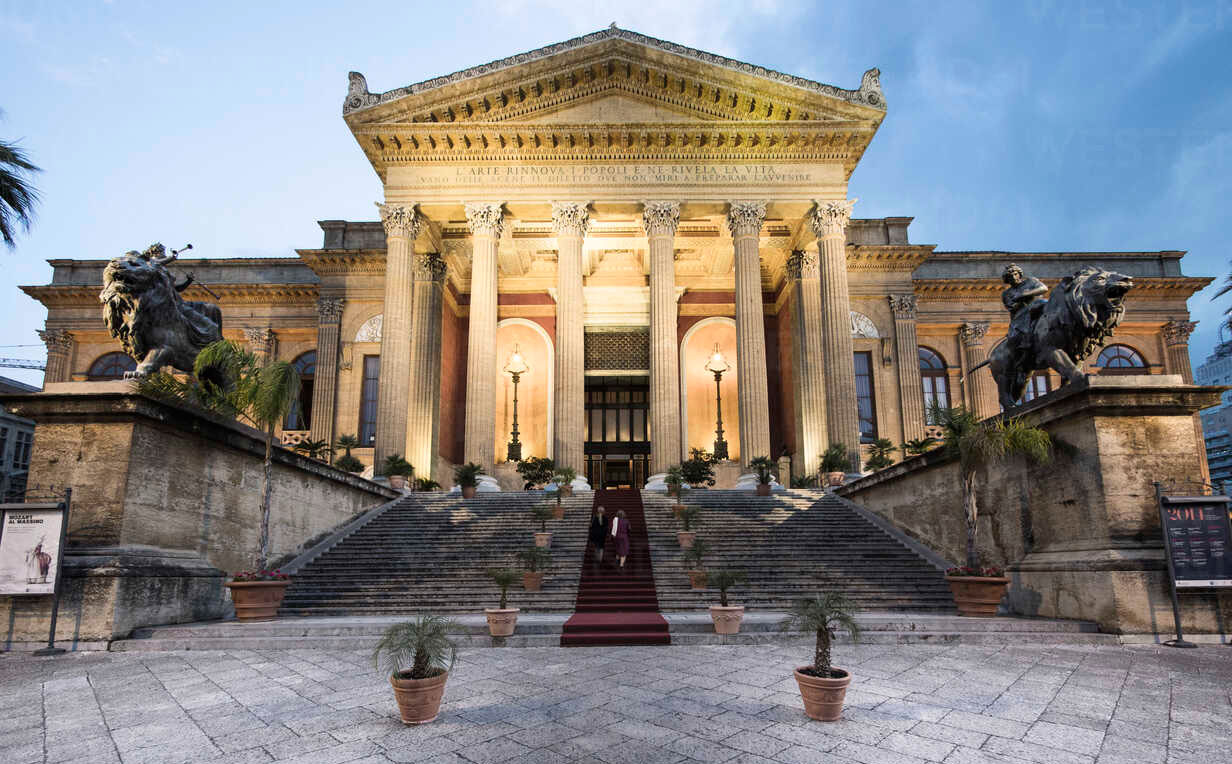
The Massimo Theater, an opera house dedicated to King Victor Emanuel II and renowned for its perfect acoustics, took 22 years to complete, becoming the most significant Italian construction project of the 19th century. At the time of its inauguration, it was the third-largest opera house in Europe (after Paris and Vienna). The exterior, designed in the high neoclassical style, incorporates elements from the Greek temples at Selinunte and Agrigento. The auditorium, realized in the late-Renaissance style and shaped in a classic horseshoe, features a unique mechanical roof formed by eleven flower-like petals that open for ventilation. Its large stage has a rich history, having welcomed elephants, horses, and staged grand productions. Today, the spirit of innovation that fueled Teatro Massimo's creation continues to shape the face of Italian opera.
The Byzantines and the Greeks
Morning
- Guided visits:
- La Zisa, alternatively listed as either a castle or palace, exemplifies the confluence of cultures so typical of the Norman period (1061-1194) in Sicily.
- Drive to Monreale
- Cattedrale, decorated with mosaics made with 2200 kg of pure gold, according to the experts.
- Chiostro, the Benedictine Cloister, with a Christian layout style, has a general tone that refers to the spirit and atmosphere of Muslim porticoed courtyards.
Afternoon
- Drive to Segesta for a guided visit to one of the most beautiful of all the Greek archaeological sites in the Mediterranean.
- Drive to Erice, the medieval hilltop town that was once a site where Greeks worshiped Aphrodite, the ancient Greek goddess of love, beauty, pleasure, and procreation.
La Zisa Palace
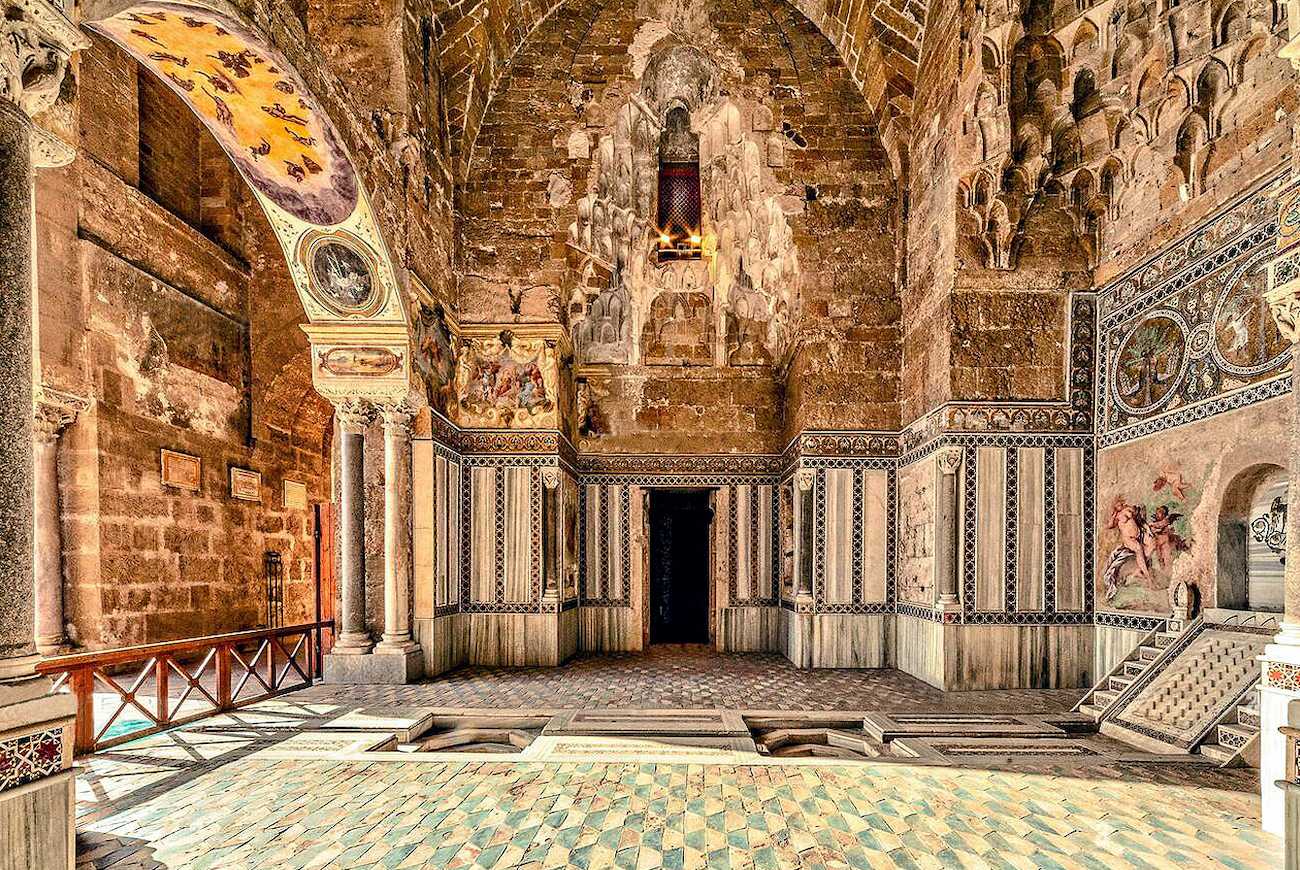
The Norman King’s Summer Retreat. The Zisa Palace, from the Arabic al-Aziz (the glorious, the splendid), is clearly inspired by Moorish architecture and a good example of palatial architecture. Construction began in the 12th century by Arabian craftsmen for king William I of Sicily, and completed by his son William II. Located outside the walls of the ancient city of Palermo, it was the most important and representative monument of the large hunting resort known as the Genoardo from the Arabic Jannat al-ar (garden or paradise of the earth). At the center of the ground floor is the Sala della fontana (fountain hall), an Islamic-style iwan hall. The whole room is decorated with marble inlays and a rare panel of Byzantine mosaics.
Cattedrale di Monreale
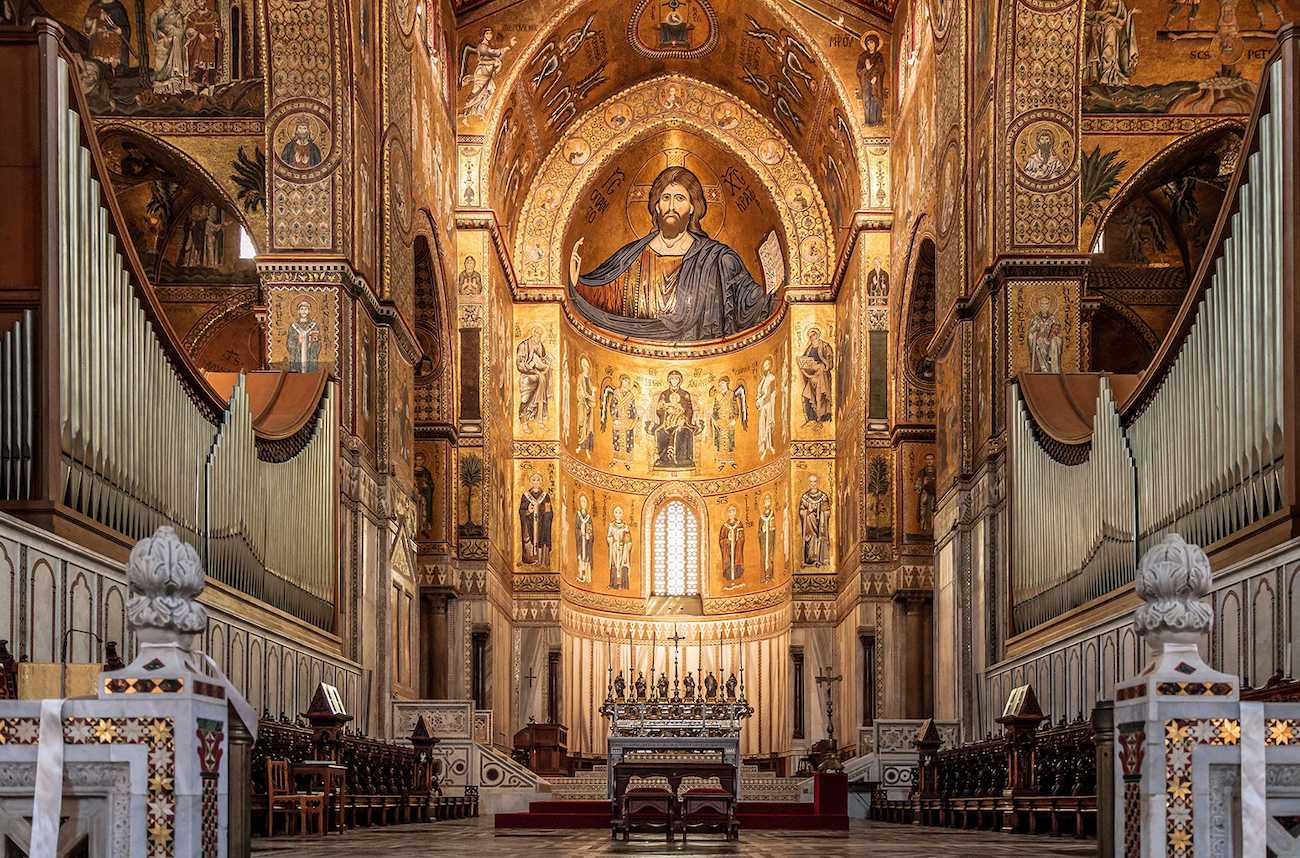
The Cathedral of Monreale was built by William II in the 12th century on the site of an earlier Greek church and is one of the greatest examples of Norman architecture in the world. What makes this church so splendid is the marvelous interior with a rich decor of mosaics that cover the upper portions of the walls and marble paneling on the lower surfaces, the columns with decorative capitals and an ornamental floor in the sanctuary. The style of this cathedral is a magnificent fusion of Western and Eastern influences - Byzantine, Romanesque, Arab, and Norman.
Chiostro di Monreale
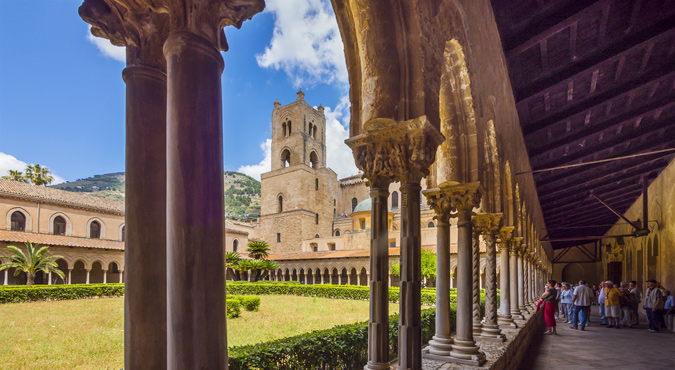
The splendid cloister of Monreale delights the eyes and spirit, a masterpiece of sculpture and inlaid precious stones. The cloister has a square shape with pointed arches supported on 228 white marble columns, richly decorated with figure carvings and mosaic work, with patterns in gold and colorful glass tesserae. The unique capitals, there is not one identical to the other, are carved with biblical scenes, allegories and foliage. At one angle of the cloister is an Arabesque marble fountain designed by Islamic artists.
Segesta
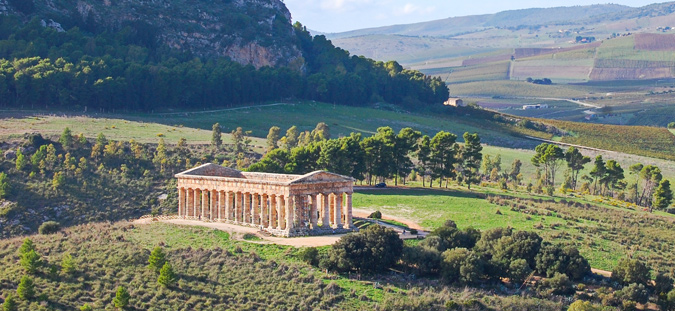
Despite the uncertainty surrounding its origins and foundation, Segesta, one of the major cities of the indigenous Elymians in Sicily, held a fascinating duality. Reputable sources claim a Trojan connection, while archaeological evidence suggests a local origin. Segesta, however, displayed a strong Hellenic influence, evident in its architectural style and cultural practices. Inscriptions on pottery reveal the use of the Greek alphabet for the local dialect. During the period of Greek dominance around 600 BC, Segesta rose to become a prominent city in the ancient world. The territory boasts two acropolis perched atop Mount Barbaro, offering a strategic vantage point for defensive lines along the slopes. Here, one finds the remains of an amphitheater constructed from local limestone, overlooking the stunning hills and the sea. Of particular beauty is the Doric temple, known as the Great Temple, that was built outside the acropolis walls.
Erice
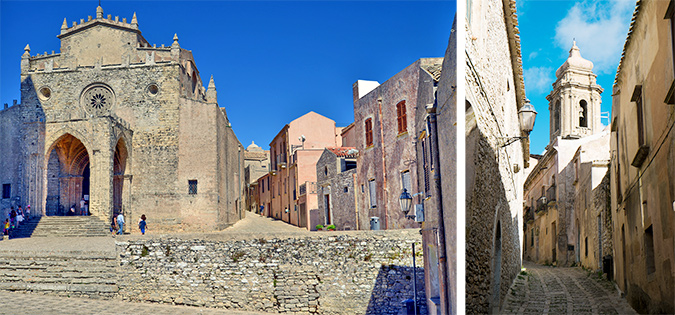
A medieval town with ancient origins, is spectacularly located on a mountainous hilltop with inspiring views of the valley below, the sea, coastline and the natural harbor of Trapani. Its famous shifting clouds, often called kisses of Venus give Erice an air of mystery that could explain why it has been an important sacred site for the different civilizations that settled in the area. When Erice was a prosperous Elymian city, around 1100 BC, a shrine was dedicated to Astarte, a Phoenician fertility goddess; later, in the same site, Aphrodite was worshiped by the Greeks and Venus by the Romans. Erice is also known for a legendary pastry shop, the Pasticceria Maria Grammatico, considered to have the best pastries in Sicily, famous throughout Italy and beyond.
2nd Leg: Moving to Cefalù
Cefalù, the Village Lying on the Sea
Morning
- Meet at 9:30 to leave for Cefalù.
- Free time or optional activities:
- 15-minute walk on the beach or along the seafront to reach Porta Ossuna, one of the gates that were part of the city walls.
- Lavatoio Medievale (Medieval Lavatory), an old wash house built into a small urban stretch of the River Cefalino.
- Walk through the alleys of narrow streets with cobblestones, fascinating courtyards and small local shops.
Afternoon
- Free time or optional activities:
- Cathedral and the Cloister, included in the Arab-Norman route and an UNESCO World Heritage Site.
- Museo Mandralisca, a small privately owned museum filled with the lifelong collection of Baron Mandralisca. Its main piece is Antonello da Messina's Ritratto d'Ignoto Marinaio (Portrait of an Unknown Sailor), often hailed as the second most enigmatic smile in the world, after the Mona Lisa.
- Hang around the beautiful Cefalu beach.
Dinner on a terrace overlooking the sea.
Cefalù
The Greeks called it Kephaloidion, “head” or “headland” (most likely referring to its promontory), and the Romans knew it as Coephaledium. The Arabs called it Gafludi, “fortified city with abundant waters”. The old town has a medieval layout with narrow streets and a medieval washing house. This ingenious structure, with its 22 basins, still bears witness to the town's clever use of the river for laundry purposes. Standing in the center of the village is the Norman-Arab Cathedral, a 12th-century marvel. This fortress-like structure features elaborate Byzantine mosaics and soaring twin towers. Entering through Porta Pescara, the sole surviving gate from the 16th century, you'll find the old harbor, a picturesque port where the locals keep their colorful fishing boats. Today, Cefalù is not just one of Italy's most beautiful towns, but also a renowned seaside resort, offering pristine white-sand beaches for visitors to enjoy.
Cattedrale
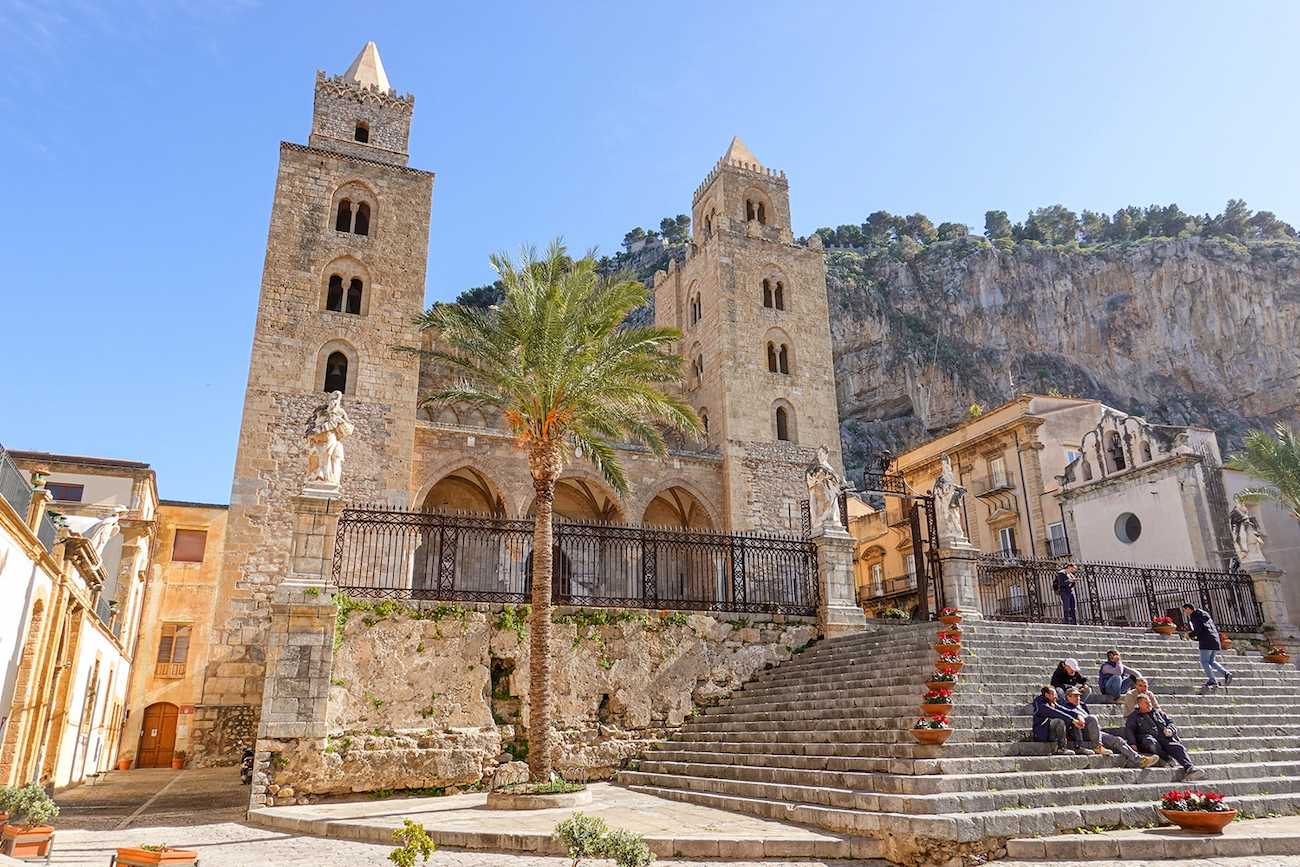
The Cathedral of Cefalù is a Roman Catholic basilica. A powerful testimony of the 1091 Norman invasion, the cathedral was erected between 1131 and 1240 in the Norman architectural style. According to tradition, the building was erected after a vow made to the Holy Saviour by the King of Sicily, Roger II, after he escaped from a storm to land on the city’s beach. The building has a fortress-like character and, seen from a distance, it dominates the skyline of the surrounding medieval town.
The Madonie Park and Its Villages
Morning
- Climb La Rocca, a cliff overlooking the city with spectacular coastal views towards Palermo to the west and Capo d'Orlando to the east.
- Free time or optional activities listed on the previous day (DAY 5).
Afternoon
- Guided visit to Gangi which became famous after being named the most beautiful village in Italy in 2014.
- Visit Fabrizio’ workshop, the tambourine maker. During a demonstration, Fabrizio will showcase the fascinating way the sound varies based on the animal skin used, the type of recycled cans incorporated, and the tambourine's size. It's remarkable that Fabrizio has been making tambourines since he was 12, despite having no formal music training!
- Drive to Castelbuono located in the heart of the Madonie National Park, which, in addition to the spectacular castle, is known for the production of manna.
Gangi
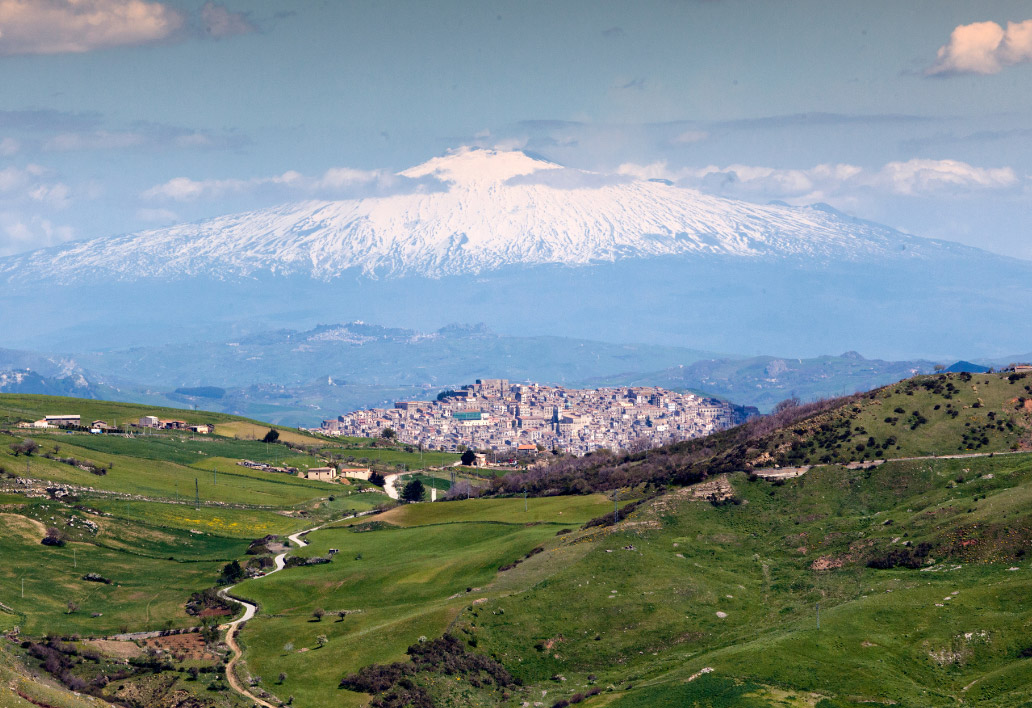
Gangi is a little gem, rich in history and traditions, founded by the Cretans. The current settlement dates to 1300, when it was rebuilt on the Monte Marone after its destruction in the course of the Sicilian Vespers war, at the end of the 13th century. In the 18th century Gangi was a flourishing cultural center, with several literary clubs and the construction of noble residences such as the Buongiorno Palace and the Sgadari Palace which houses the Archaeological Museum, the Gianbecchina Art Gallery, the Ethno-anthropological Museum and the Museum of Weapons. On top of the town there is a Castle, originally built to be the residence of the Ventimiglia Lords, which is an example of the late medieval architecture of the region.
Castelbuono
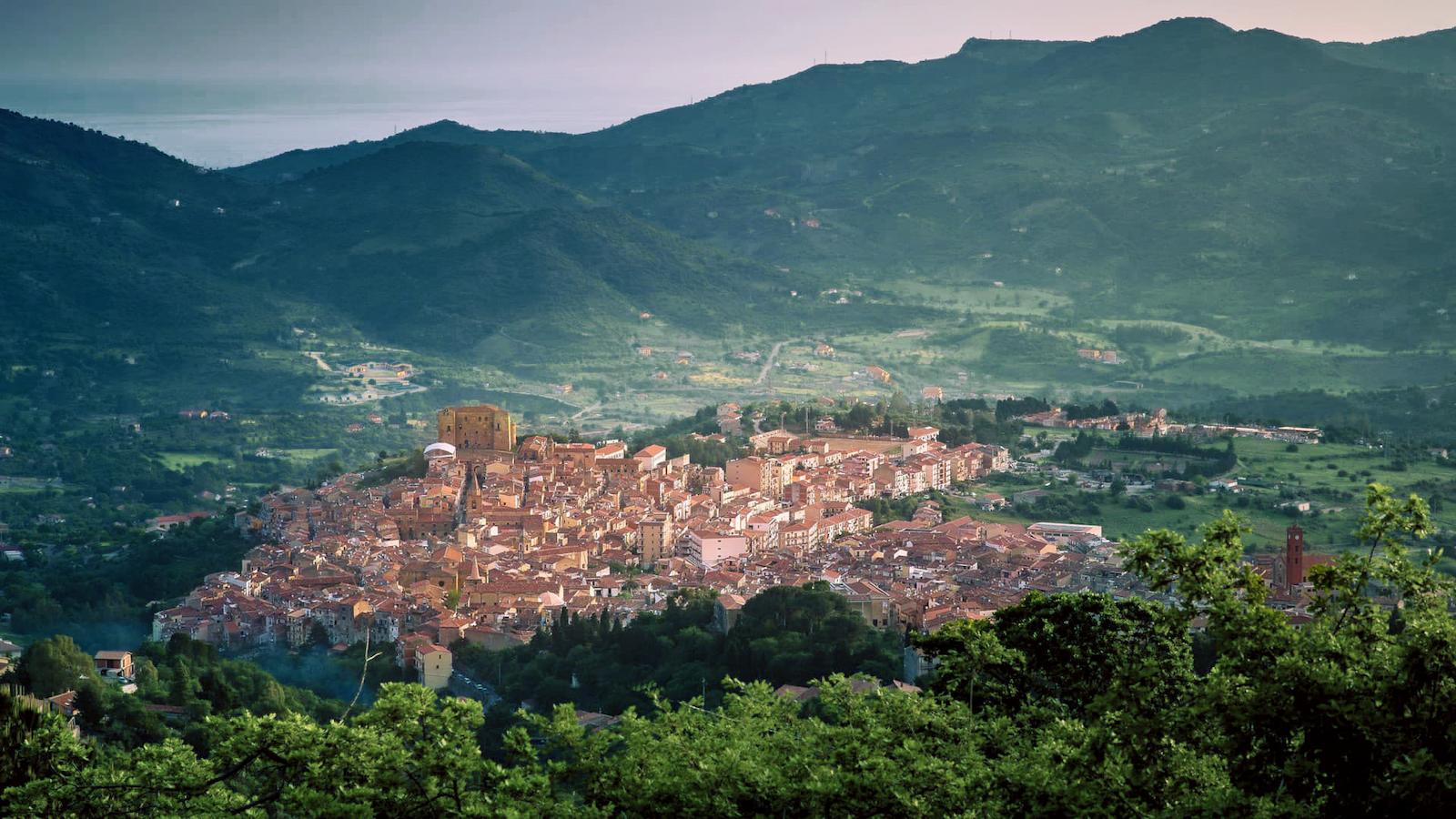
Halfway between the sea and mountains in the midst of manna ash woods and a chestnut forest, the city of Castelbuono takes its name from the castle built in 1317 in what used to be an ancient Byzantine town. The city developed around the castle, achieving economical and political importance and becoming a small, autonomous state. By the 15th century, Castelbuono was a lively center that welcomed prestigious artists from different cultures and experienced an urban expansion that included churches, monasteries, a theater and public fountains. In the 16th century, Castelbuono became the capital city of Madonie.
Manna
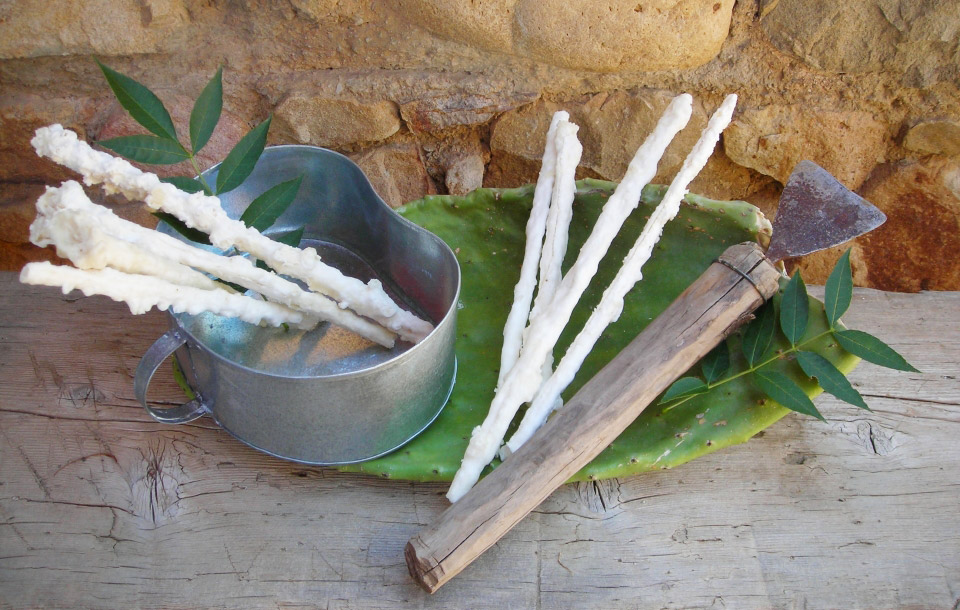
The Sicilian Manna is a typical local product known already during the Latin and Greek age as “Nectar from heaven” or the “Honey-Dew”. It is a crystallized lymph extracted from the trunks of the manna tree, a type of narrow-leaf ash called fraxinus angustifolia, that has a characteristic sweet taste, something between honey and maple syrup, but a little less sweet. It is a versatile product that can be used in cooking instead of sugar or as a natural detoxifier and since it contains only 3% glucose it can be used by diabetics. Manna is harvested exclusively in the lands of Madonie, between Castelbuono and Pollina where it used to grow wild but now it is cultivated as well.
3rd Leg: Moving to Syracuse
From Temples to Roman Mosaics
Morning
- Meet at 9:00 to leave for Agrigento.
- Guided tour at the archeological site of the ancient city of Akragas.
Afternoon
- Drive to Piazza Armerina for a guided tour of the famous 4th century country villa, Villa Romana del Casale, home of some of the world’s most famous Roman mosaics.
- Drive to Syracuse.
Welcome Aperitif.
Dinner nearby the hotel.
Agrigento
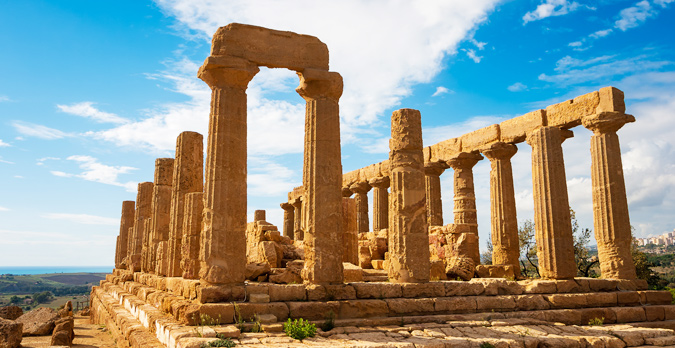
Stretching along a ridge to the south of Agrigento are a string of Greek temples, a sight comparable to the Acropolis of Athens. Valle dei Templi (Valley of the Temples), is among the largest and best-preserved ancient Greek sites outside of Greece. These splendid temples, with Doric style columns, were built in ancient Akragas, a city described by Pindar as “the most beautiful city built by mortals”. Akragas reached its zenith in the 5th century BC and was one of the leading cities of Magna Graecia, with a population estimated between 200,000 to 800,000. During the Punic Wars, it was conquered by the Romans, who latinized the name to Agrigentum. Later it fell under Arab rule, with the name of Kerkent and, in 1089, it was conquered by the Normans. Built high on a steep hillside, the massive temples also offer great views of the sea.
Villa Romana del Casale
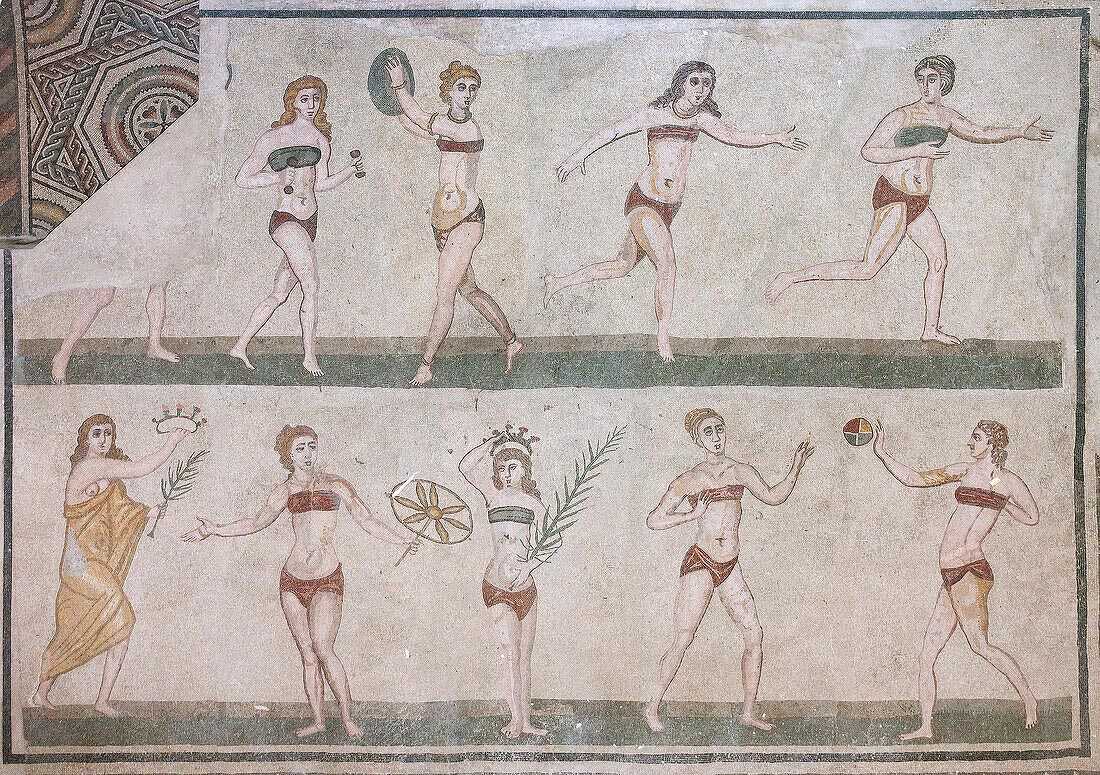
Built in the 4th century as an elegant hunting lodge, the Roman Villa del Casale is home to some of the best preserved and extensive examples of Roman mosaics. These extraordinarily vivid tiles, probably produced by North African artisans, deal with many subjects, ranging from mythological scenes to portrayals of daily life and are made of pieces of finely cut stone, set into mortar for a smooth finish. The Chamber of the Ten Maidens, nicknamed the “Bikini Girls”, shows athletic girls exercising in scant two-piece red swimsuits. The Villa was built in four main sections: the entrance with its thermal baths, a peristyle with living area and guest rooms, the private rooms of the owner, and a basilica (public hall), dining area and elliptical courtyard.
Syracuse, the Splendor of Magna Graecia
Morning
- Guided tour:
- Neapolis Archaeological Park where the Greek theater resides, the main monument which today is still used for theatrical and musical performances.
- Ortigia, the small island that was the ancient city of Syracuse, still evocative of a different era as can be seen in the main.
Afternoon
- Free time or optional activities:
- Cathedral, one of a kind, built in the 7th century over the Temple of Athena (5th century BC) with its columns incorporated to the walls of the current church.
- Mikveh, the biggest and oldest Jewish ritual bath in Europe.
- Regional Gallery of Palazzo Bellomo, featuring a number of unusually well-preserved elements from the 12th Century.
- Museo Archeologico Regionale Paolo Orsi, among the greatest European museums for extension of the exhibition spaces, is unique in its kind. Since the late 18th century, it has housed a remarkable collection of Greek and Roman artifacts unearthed throughout Sicily, offering a fascinating glimpse into the island's rich history.
Syracuse
More than any other city, Syracuse encapsulates Sicily’s timeless beauty. Ancient Greek ruins, café tables spill onto dazzling baroque piazzas, and medieval narrow streets lead down to the sparkling blue sea. In its heyday, Siracuse was the largest city in the ancient world, bigger even than Athens and Corinth. It was founded by Corinthian colonists and quickly flourished, becoming a rich commercial town and regional powerhouse. Victory over the Carthaginians in 480 BC paved the way for a golden age, during which art and culture thrived and the city’s kings commissioned an impressive program of public building. Syracuse has outstanding architecture that spans several cultures - Greek, Roman and Baroque. The central Neapolis Archaeological Park comprises the Roman Amphitheater, the Greek Theater and the Orecchio di Dionisio (Dionysus’ Ear), a limestone cave shaped like a human ear.
Isola di Ortigia
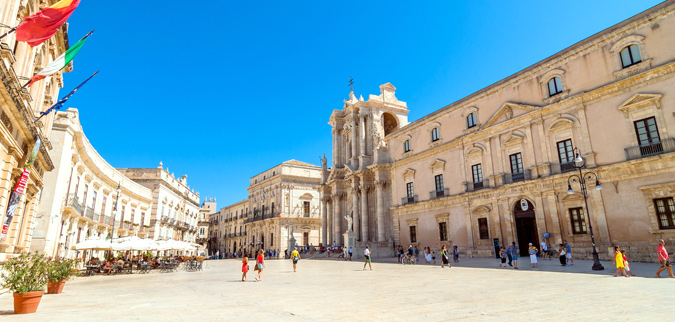
Famous for its freshwater springs, the Ortigia Island was actually the ancient city of Syracuse, being inhabited since the Bronze Age. Packed with 2,500 years of history, the island’s varying architectural styles encompass Greek and Roman remains, Medieval Norman buildings and baroque structures. The main sites include the Maniace Castle, a towering building from the 13th century, the Fountain of Arethusa in the southern part of Ortigia, and the Cathedral, one of a kind. It was built in the 7th century over the Temple of Athena (5th century BC). This was a Doric temple with columns that still can be seen incorporated in the walls of the current church.
Baroque Exuberance, UNESCO’s World Heritage Sites.
Morning
- Meet at 8:30 to leave for Noto, considered the capital of Sicilian Baroque.
Free time or optional activities:- Trenino Barocco. Hop on the little tourist train for a ride around Noto to explore the town's main sights and learn about its history.
- Wander around the gorgeous little backstreets and alleys.
- Climb the bell tower of San Carlo Borromeo church for beautiful views of town.
- Palazzo Nicolaci, the town's grandest palace, boasts wrought-iron balconies supported by a swirling pantomime of grotesque figures.
- Teatro Comunale, a small theater dedicated to Italian theater and silent film actress Tina Di Lorenzo, stuns with its intricate stucco work.
- Drive to Ragusa, known as the City of Two Souls, is split into two parts and separated by a deep ravine.
- Descend from Ragusa's upper town on a 340-step walk. With each step down, the town unfolds revealing its magnificence as if carved directly from the rock.
Afternoon
- 10-minute drive to Modica, one of eight towns in Val di Noto (Noto Valley) recognised by UNESCO, known to be the custodian of a 400-year tradition of Sicilian chocolate-making.
- Visit L’Antica Dolceria Bonajuto to see the various stages of chocolate making, from the cocoa beans into chocolate bars.
- Drive back to Syracuse.
Noto
In ancient times Noto was known as Netum and, according to legend, Daedalus stayed in the city after his flight over the Ionian Sea, as did Hercules when he completed his seventh task. After Roman domination, it was conquered and ruled by Arabs until 1091, when it became the last Islamic citadel in Sicily to fall to the Christians. Later it became a rich Norman city, expanding itself with new buildings, churches and palaces. Noto was totally destroyed during the 1693 earthquake and to rebuild the city and relocate it closer to the Ionian Sea, famous architects were hired to plan a new Noto. The new city seems to be made of gold thanks to a local limestone whose golden hues light up at sunset. This Sicilian town is also renowned for its Infiorata, a floral festival meaning "decorated with flowers." Held annually over the third weekend of May, the Infiorata transforms Via Nicolaci, one of Noto's charming streets, into a vibrant work of art. Local and international artists collaborate on a chosen theme, meticulously crafting a kaleidoscopic carpet of petal mosaics using specially cultivated flowers.
Ragusa
Nestled in the Monti Iblei (Hyblaean Mountains) above the gorge of the Irminio River, Ragusa lies west of Syracuse. The city's history mirrors that of much of Sicily, with waves of inhabitants including the Indo-European Sicels, followed by the Greeks, Carthaginians for a brief period, Romans, Byzantines, Arabs, and Normans. Ragusa's fate then became intertwined with the Kingdom of Sicily, established in the 12th century. A devastating earthquake in 1693 led to Ragusa's dramatic transformation. Rebuilt in the 18th century, the city effectively split into two distinct sections. Upper Ragusa, or Ragusa Superiore, sits on a plateau, while Ragusa Ibla, nestled below, rose from the ruins with a blend of medieval and Baroque influences. The Valle dei Ponti (Valley of Bridges), a deep ravine spanned by four picturesque bridges, separates these two halves. The most notable bridge is the 18th-century Ponte dei Cappuccini (Capuchin Bridge). Ragusa Ibla is home to a wide array of Baroque palaces and churches, exemplified by the Cathedral of San Giorgio. Notably, the cathedral's portal retains a unique Catalan-Gothic style.
Cioccolato

Can eating chocolate help you lose weight? Many of Modica’s chocolate shops display articles claiming that a square of dark chocolate reduces sugar cravings and helps you lose extra pounds. Modica is well known for its specialty chocolate, made following ancient Aztec methods. We will visit a chocolate shop to watch a chocolatier at work. Influenced by Aztec traditions, the chocolate will be made at low temperatures to prevent the alteration of organoleptic cocoa components, giving the dark chocolate a slightly granular texture and rich, aromatic flavor.
4th Leg: Moving to Castelmola
A Jewel Perched on the Side of the Mountain
Morning
- Meet at 9:00 to leave for Castelmola, a "window" on the sea that sits just steps away from Taormina.
- Walk to the historical center of Castelmola to enjoy the view.
- Visit the Norman Castle with the lookout over the coast.
- Taste the almond wine at Caffè San Giorgio.
Afternoon
- Drive to Taormina, known as the “Pearl of the Mediterranean Sea”.
- Visit the 3rd-century theater, a Greek masterpiece later renovated by the Romans, who expanded the space and added flourishes like statues and columns.
- Free time or optional activities:
- Ride the aerial tramway to get to the beach and walk through the narrow stretch of sand to reach the tiny island and nature reserve of Isola Bella (Beautiful Island).
- Stroll in the Public Gardens, the town's central green space.
- Explore Corso Umberto, the town's main street, where boutiques and gelato shops line the basalt-paved path.
Dinner in Taormina.
Castelmola
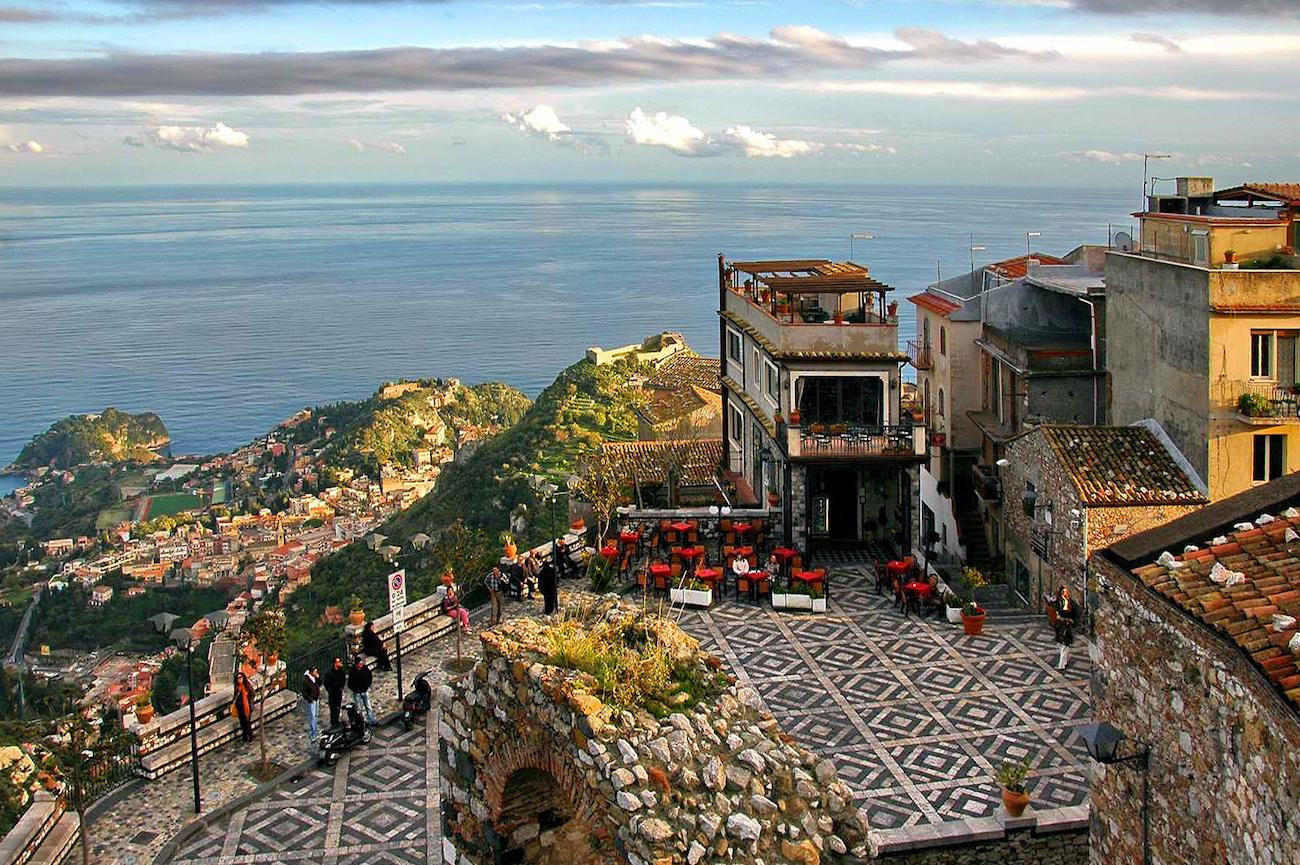
Perched atop a peak over 500 meters (1,640 feet) high, the small, perfectly preserved village overlooks Taormina. Its medieval heart, a maze of narrow streets, charming piazzas with lookout points, and historic churches, remains remarkably intact. The best attraction is the belvedere in Piazza Sant'Antonino, where a mesmerizing mosaic of white stone and lava stone forms the floor. From here it is possible to enjoy the panorama of the Straits of Messina and the distant Calabrian coast. The village's other treasures include the Duomo di San Nicola di Bari and the Castello di Mola's captivating ruins, offering stunning views of Giardini Naxos and the majestic Mount Etna.
Taormina
Taormina (from latin Tauromenium), built on Monte Tauro, was founded by Andromacus in 392 BC and dominates two beautiful bays below and on the southern side, the top of Mount Etna. It has a magical, mythical atmosphere which has attracted visitors since 212 BC when the Romans conquered it and became a favorite holiday spot for Patricians and Senators, thus starting Taormina’s long history as a tourist resort. Then came the Byzantines, Saracens, Arabs, Normans, Spaniards and French, all of whom chose it as their residential site. Taormina retains its allure, captivating tourists worldwide. From bustling Corso Umberto, the pedestrian heart that winds between Porta Messina and Porta Catania, a labyrinth of charming alleys unfolds. Gorgeous medieval buildings line these orange-fragranced streets, a haven that once inspired artistic giants like Alexander Dumas, Gustav Klimt, and Oscar Wilde. Adding to its cultural legacy, the ancient Teatro Greco-Romano still stands, a testament to the town's rich history and a vibrant venue even today.
The Volcano
Morning
- Meet at 8:30 to leave for the Sartorius Mountains.
- A pleasant and easy excursion on the Northeast side of Mount Etna, an area of particular interest from a botanical and geological point of view. The Sartorius Mountains were “born” in 1865 due to an immense lava flow, 12 m (39 ft) deep and approximately 8 km2 (3 mi2) in size which formed the typical “crater chain” of eruptive cones.
- Gambino Winery, located at 800 m (2625 ft) above sea level, represents one of the best examples of high-altitude Etna vineyards.
Afternoon
- Rifugio Sapienza, the Alpine mountain refuge on the Sud side of Etna.
- Cable cars ride up to 2,500 m (8200 ft) of elevation to admire the breathtaking panorama.
Etna
Mount Etna is the tallest active volcano in Europe and one of the most active in the world, with a history of eruptions dating back 3,500 years. Writers have called it the Wicked Witch, the Pillar of Heaven and many locals call the volcano Mongibello, the beautiful mountain, in spite of its dangers. The highest active volcano in Europe, Mt. Etna has attracted the attention of travelers, artists, poets and philosophers for centuries. Etna’s frequent eruptions throughout history have changed, sometimes profoundly, the surrounding landscape, at times threatening the people who have settled around it. The first historical references to the activity of the Etna eruption are found in the writings of Thucydides and Diodorus of Sicily and of the poet Pindar. According to Diodorus, about 3,000 years ago following a phase of violent explosive activity, the inhabitants of the area near Etna moved to the western parts of the island. Although Etna’s lava flows and dust clouds bring destruction, they also enrich the soil, making the lower slopes and surrounding plains some of the most fertile regions in Sicily, with vast expanses of vines and citrus groves. Etna’s surface is characterized by a variety of landscapes, including dense forests and desolate areas covered by magmatic rock. The volcano’s weather can change quickly and, when snow-capped, Etna attracts skiers.
5th Leg: Moving to Paestum
A Day on the Road
Morning
- Meet at 7:30 to leave for Paestum, located in the Campania region, the archeological park with the best preserved and most spectacular Greek ruins left in Italy.
- Ferry ride from Messina to the mainland.
- Stop in Reggio Calabria to visit the Riace Bronzes at the National Archeological Museum.
Afternoon
- Stop at the Certosa di Padula for a guided tour to one of Italy’s oldest and largest Carthusian monasteries.
Welcome Aperitif.
Dinner at the hotel.
Bronzi di Riace
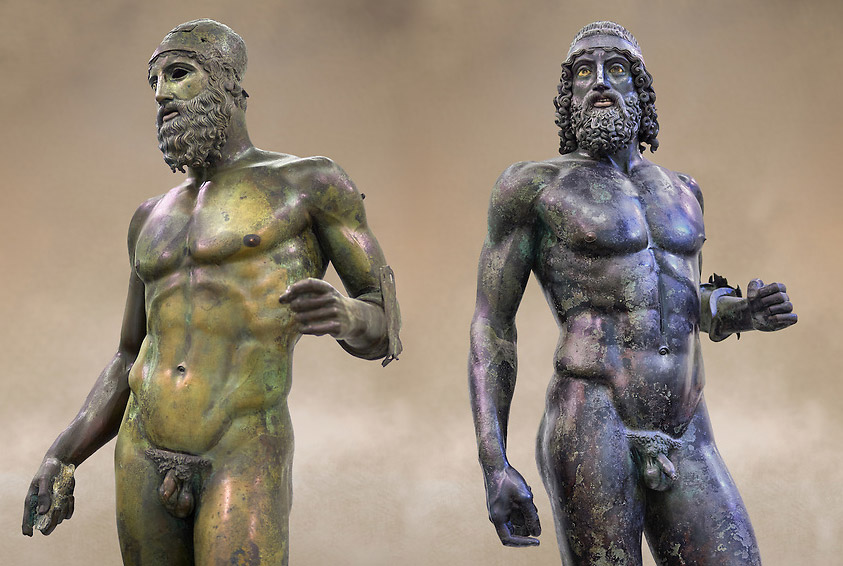
The Riace Bronzes are a pair of bronze statues of Greek or Magna Graecia origin, datable to the 5th century BC and found in 1972. Slightly larger than life-size (6.73 ft. and 6.5 ft.), the nude male figures represent two warriors, one older than the other, that look human and divine at the same time. They are considered masterpieces of Classical Greek sculpture. Although there are differences in execution of style, there are also enough similarities to suggest they may be contemporary. A likely date of their transportation would be the 1st to 2nd century BC when the Romans looted large quantities of Greek artworks.
Certosa di Padula
The ancient Carthusian monastery was founded by Tommaso di San Severino in 1306 and dedicated to San Lorenzo. Its structure, as all the Carthusian monasteries of Italy, recalls the gridiron on which San Lorenzo was burned alive. Encompassing a vast 51,500 square meters (12.7 acres), the Padula Charterhouse, Italy's largest, boasts a breathtaking collection of structures. Three cloisters, including the world's largest, a serene garden, a courtyard, the church, and 350 rooms solidify its reputation as one of the most sumptuous Baroque monumental complexes in southern Italy.
6th Leg: Moving to Amalfi
The Real Mozzarella
Morning
- Meet at 8:30 for a 15-minute walk to Paestum archeological site.
- Guided Tour:
- Ancient Ruins, which are among the only Greek ruins left on Italy’s mainland.
- National Archaeological Museum where enigmatic frescoes painted on the walls and covers of tombs are on display.
- Tour at Tenuta Vannulo, the first certified organic producer of water-buffalo mozzarella in Italy. Cutting-edge milking techniques, classical music and self-massage stations safeguard the animals’ welfare for a less stressful pace of life that results in the highest quality milk used in Vannulo’s dairy products.
Afternoon
- Drive to Amalfi, the town that lends its name to the famed Amalfi Coast. This UNESCO-listed coastline, stretching 55 kilometers (34 miles), is a jewel-box of 13 cities and towns scattered along the Mediterranean.
Welcome Aperitif.
Dinner nearby the hotel.
Paestum
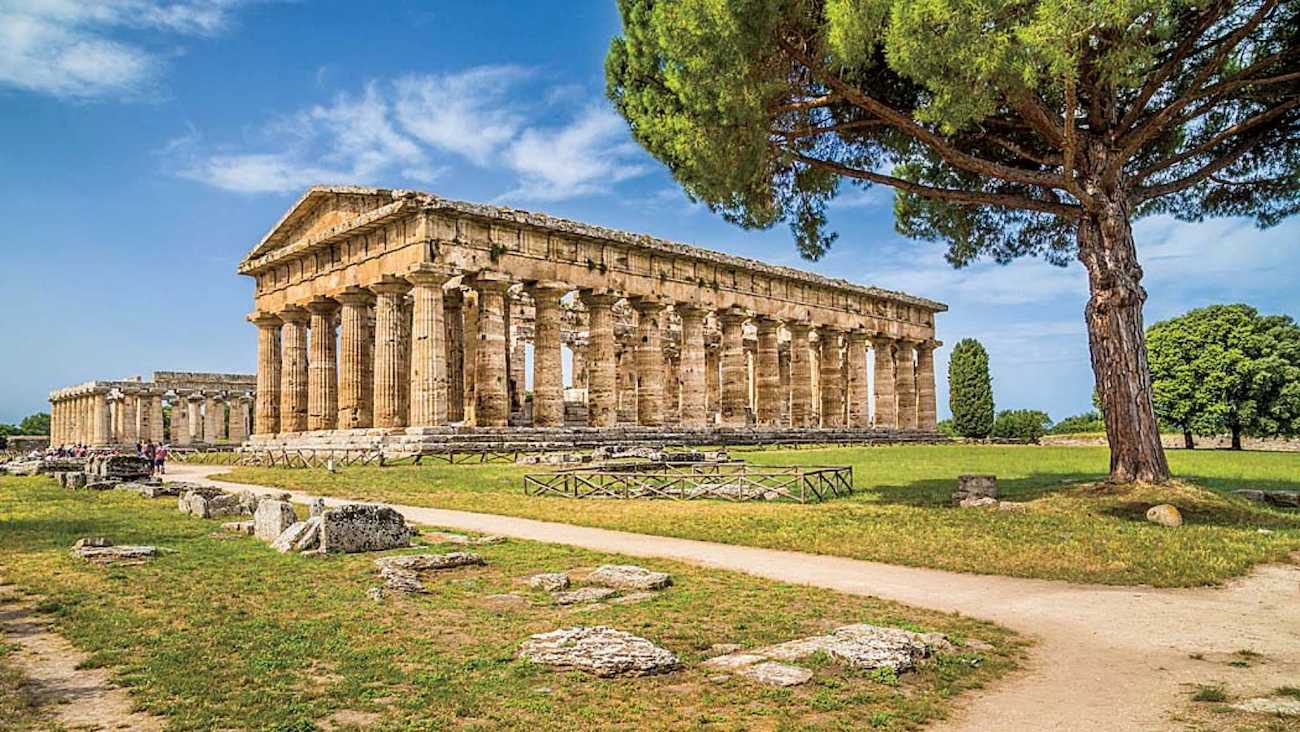
The main three temples were all built in honor of female goddesses. The most impressive and best preserved and almost completely intact, is the Temple of Hera II (erroneously known as Temple of Neptune) dating to 450 B.C. and measuring 195 by 80 feet. The Temple of Hera I was the first temple of the three, as well as the first one dedicated to Hera. Earlier archaeologists thought it was a Roman public building, so dubbed it the “Basilica” of Hera. While smaller than the other one, it’s still huge and probably built in 550 B.C. The third one, the small Temple of Athena, from 500 B.C. that has also been (mistakenly) attributed to Ceres, was dedicated to the goddess of war, wisdom, and heroism. Paestum is also known for its ancient tomb paintings, the most famous of them all are the frescoes from the Tomb of the Diver, painted back in 470 B.C.
Mozzarella
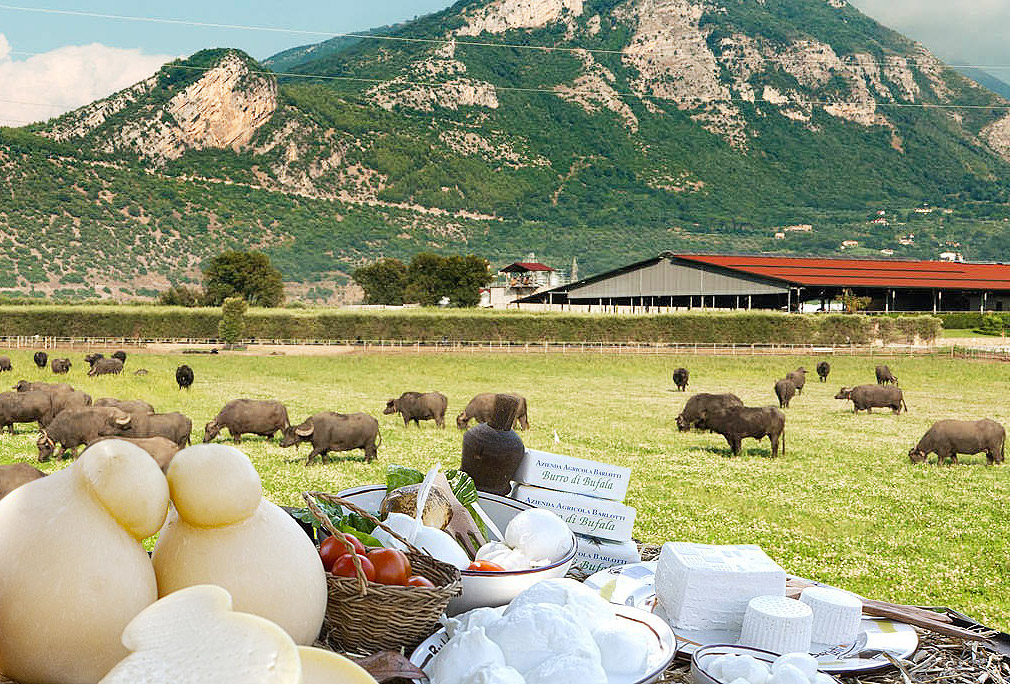
The first evidence of buffalo mozzarella, simply called Mozza, because the final phase of the process ends with the mozzatura (cut), dates back to 1570 in a cookbook by Scappi, one of the chefs of the papal court. Beyond the various origin hypotheses, the buffalo established itself in the Italian region of Calabria, Puglia and Campania. Originally, the buffalo milk was transformed in the same place where it was milked, in the bufalare. The milk becomes caciocavallo, butter, ricotta, provola and of course mozzarella that has generally a rounded shape, but can be formed in other shapes like bocconcini and braids.
Costiera Amalfitana
The Amalfi Coast is a stretch of coastline, about 40 km (25 mi) of winding road, overlooking the Tyrrhenian Sea and the Gulf of Salerno. It’s named after the town of Amalfi, which makes up its main historical and political center. The two extreme cities are Vietri sul Mare and Positano. With its spectacular landscapes and idyllic climate it has been a tourist destination since Roman times. Jagged cliffs, adorned with pastel-colored fishing villages, plunge dramatically towards crystalline turquoise waters, lapping at the shores of hidden coves. Breathtaking historic houses cling precariously to the cliff sides, while the surrounding mountains are terraced with verdant vineyards and fragrant lemon groves – the source of some of Italy's finest limoncello.
The Amalfi Coast is home to Atrani, the smallest municipality in Italy with an area of 0.1206 km2 (±30 acres).
Cetara owes its name to the Latin cetari or fishermen of big fish even if the economy of this municipality is based, for the most part, on anchovy fishing!
Despite its name, the island of the Positano archipelago Gallo Lungo (long cock), has the incredible and realistic shape of a dolphin.
Gardens and a Beautiful View
Morning
- Visit a lemon grow, one of the most typical images of the Amalfi Coast. Learn about the ‘Sfusato Amalfitano’ the unique lemon breed native to this spectacular corner of the world. Taste a freshly made lemonade and lemon cake and end the experience with a limoncello.
- Guided Tour in Amalfi, which was, at one time in history, the most important city and commercial power on the Mediterranean Sea.
Afternoon
- Bus ride to Ravello, a resort town set 365 meters above Amalfi, known for its beautiful villas and breathtaking views.
- Villa Rufolo, the flagship of Ravello, the stronghold of the ancient great Maritime Republic of Amalfi which contains centuries of history. Unique in architecture and décor elements that has never failed to amaze those who have visited it.
- Free time or optional activities:
- Villa Cimbrone, the other jewel of Ravello. Although the villa is a 5-star private hotel, it is possible to tour the gardens and enjoy breathtaking views of the Mediterranean and the spectacular coast below.
- 40-minute walk to the sea along the Sentiero dei Limoni (lemon trail) which, from Ravello, crosses chestnut groves and woods, reaches the Convent of San Nicola from which it is possible to admire a wonderful panorama over the valley of Maiori and Minori, and ends at the sea of Minori. Return to Amalfi by boat.
Amalfi
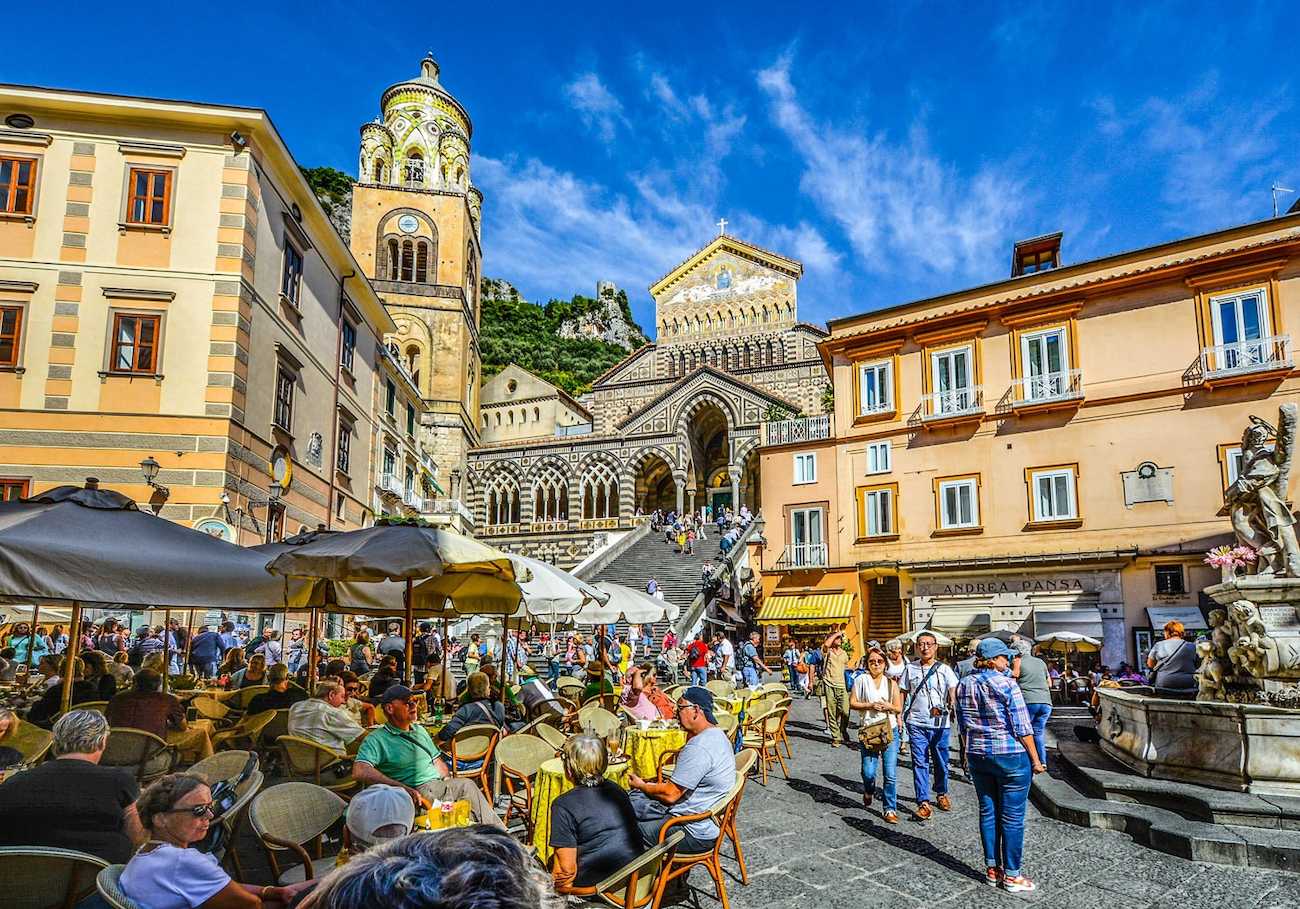
Located in a dramatic natural setting at the mouth of the Valle dei Mulini (Water Mills Valley), Amalfi is the most historic town along the coast. Between the 9th and 11th centuries it was the first of the maritime republics that included Pisa, Venice and Genoa, and had the monopoly of trade with the East, a bridge between the Byzantine and western worlds for centuries. Famous for its white houses clinging to the rock, connected to each other by covered alleys and stairways. The focal point is the Piazza del Duomo, where the striking Arab-Norman Cathedral of St. Andrew sits with the striped facade and the sixty steps leading to its entrance and is preceded by a structure with arches and decorations of Moorish influence. Inside is the beautiful highly decorated crypt and the Cloister of Paradise with a forest of columns, Arabesque arches and an amazing fresco. Amalfi is also known for the production of limoncello and, in fact, looking at the surrounding terraced hills, it is possible to see the lemon groves that produce a special variety called Sfusato Amalfitano.
Ravello
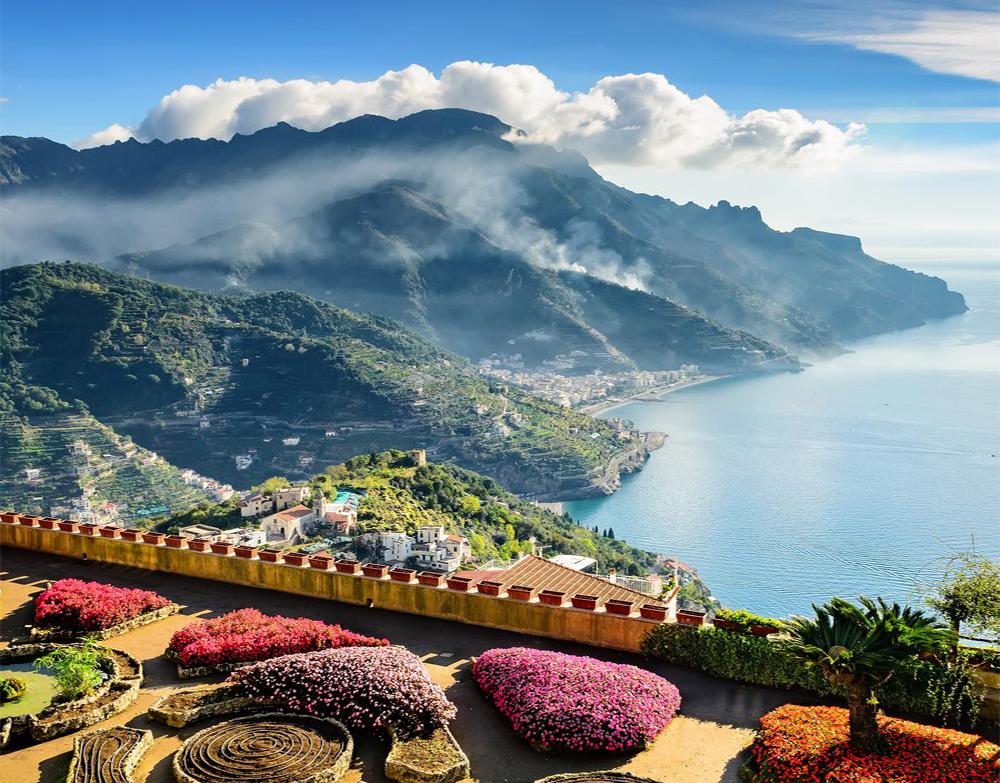
Ravello is located in a fascinating and particular landscape. The discovery of Ravello as a pleasant and worthy place dates back to Roman times with a second wave when, in 1851, the Scottish botanist Francis Neville Reid bought and restored the ancient Villa Rufolo and its gardens, where the German musician Wagner had found inspiration for the completion of the opera Parsifal. Some time later another “tourist”, Ernest William Beckett, fascinated by Ravello, gave life to the magical structure of Villa Cimbrone. The presence of these two personalities meant that Ravello began to be known among the travel destinations of the late 19th century that has extended to the 20th and 21st centuries. Ravello offers testimonies of a history that extends almost two thousand years that include the ruins of the ancient walls, the small churches, the villas, and The Duomo di Ravello.
The Amalfi Coast Seen from the Sea
Morning
- Meet at 9:00 to walk to the pier for a boat ride to Capri Island.
- Taxi ride to Anacapri, a quieter village that offers a glimpse into the island's authentic side.
- Walk to the picturesque historic center with quiet alleys and peaceful piazzas festooned with brightly colored geraniums and bougainvillea.
- San Michele Church with its remarkable maiolica floor, one of the most important examples of the 18th century Neapolitan school.
Afternoon
- Free time or optional activities:
- Villa San Michele, surrounded by an enchanting garden full of flowers, columns, pergolas, centenary cypresses and with a breathtaking view of the Gulf of Naples. The villa also has a unique collection of antiquities and archeological findings.
- Chairlift to Monte Solaro which offers the very best views of the island. Ride about 13 minutes enjoying spectacular views along the way.
- Taxi ride to Capri town, the other side of the island full of high-end fashion, glamorous nightclubs and cosmopolitan restaurants.
- Walk through the center to get to the Giardini di Augusto (Gardens of Augustus), a small oasis of colorful flowers and exotic plants overlooking the bay of Marina Piccola and the Faraglioni, three towering rock formations above the surface of the sea often known as the Monster's Teeth.
- Boat ride back to Amalfi.
Isola di Capri
The island of Capri is a gem radiating a brilliant history through the centuries. There are innumerable points of interest that are witnesses to an enchanted past. Starting with some ancient Roman archaeological finds, like the Villa Jovis, built by the Emperor Tiberius, followed by the Certosa (Basilica) di San Giacomo which houses a museum where it is possible to admire two statues that were recovered from the deep Grotta Azzurra (Blue Grotto). Beyond the cultural attractions, Capri is an island that offers a landscape of wild beauty sculpted by wind, sea and the hand of man.
7th Leg: Moving to Pompeii
At the Foot of the Vesuvio
Morning
- Museo della Carta. Located in an ancient XIV century medieval paper-mill, the museum offers a unique opportunity to see paper production in action. Watch skilled artisans utilize the power of the Canneto torrent's waters to operate the ancient watermills.
- Drive to Pompeii, the remarkably preserved city that offers a window into the art, customs, trades, and everyday life of the Roman civilization.
Lunch at the hotel.
Afternoon
- Guided visit to Pompeii archeological site.
Dinner nearby the hotel.
Pompeii

Pompeii was built on a spur formed by a prehistoric lava flow to the north of the mouth of the Sarno River. Pompeii was destroyed, together with Herculaneum, Stabiae, Torre Annunziata, and other communities, by the violent eruption of Mount Vesuvius in 79 AD. A vivid eyewitness report is preserved in two letters written by Pliny the Younger to the historian Tacitus. Site excavations in the late 20th century have brought out further details. Just after midday on August 24, fragments of ash, pumice, and other volcanic debris began pouring down on Pompeii, quickly covering the city to a depth of more than 9 feet causing the roofs of many houses to fall in. Surges of pyroclastic material and heated gas, known as nuées ardentes, reached the city walls on the morning of August 25 and soon asphyxiated those residents who had not been killed by falling debris. Additional pyroclastic flows and rains of ash followed, adding at least another 9 feet of debris and preserving in a pall of ash the bodies of the inhabitants who perished while taking shelter in their houses or trying to escape toward the coast. Pompeii was buried under a layer of pumice stones and ash 19 to 23 feet deep. The city’s sudden burial served to protect it for the next 17 centuries from vandalism, looting, and the destructive effects of climate and weather.
The Other Pompeii
Morning
- Guided tour:
- Herculaneum, which according to legend, was founded by Hercules on his return from one of his Twelve Labours.
- Oplontis ruin where the Poppea’s villa is located, the grand vacation residence of the wife of Emperor Nero.
- Cantina del Vesuvio, a small family winery on the volcanic slopes of Mount Vesuvius.
Afternoon
- Guided tour of Mount Vesuvius National Park.
- Walk the Gran Cono Crater Rim Trail for the thrill of traversing an active volcano's edge and experiencing a breathtaking 360-degree view.
Ercolano
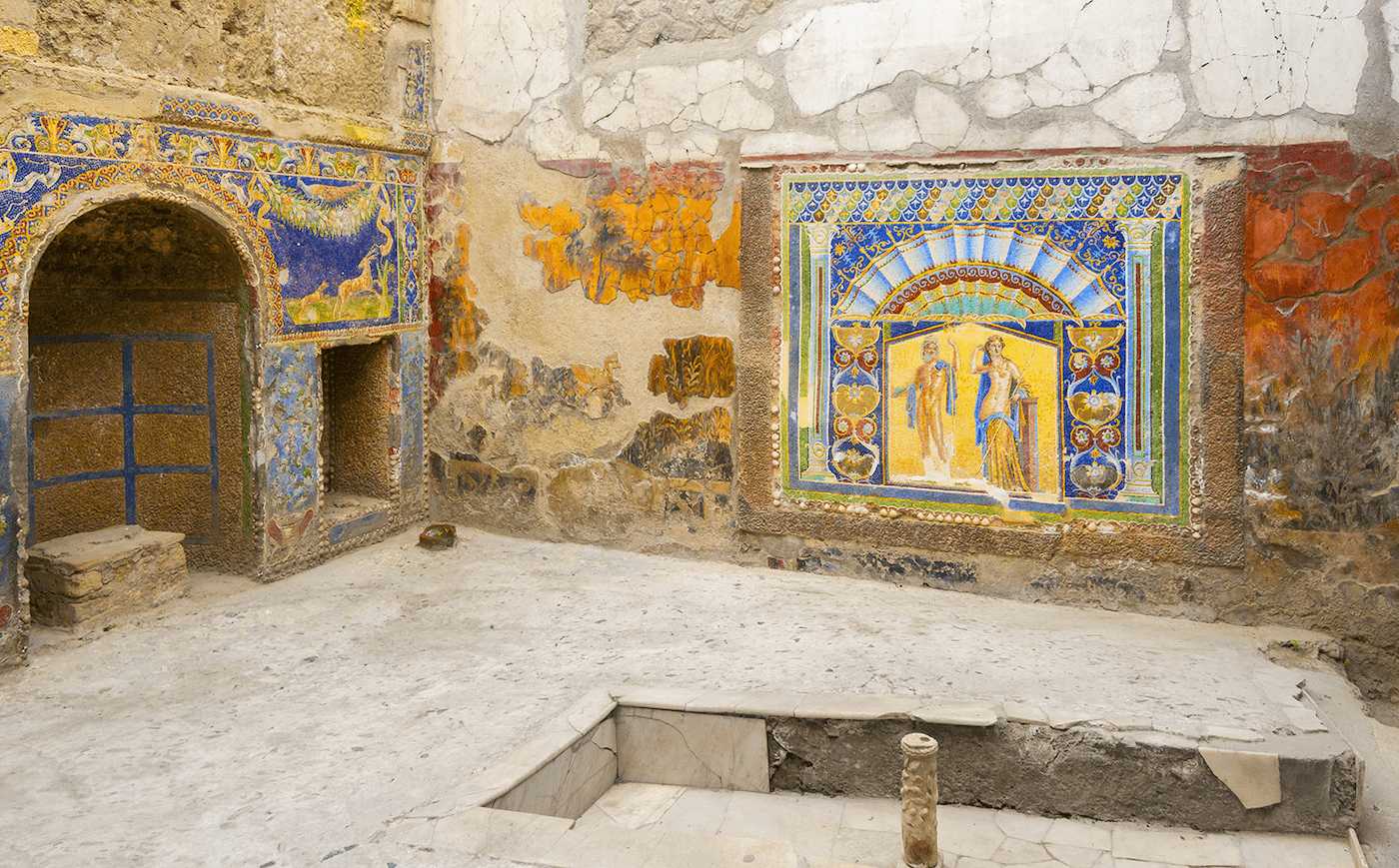
When we hear of the eruption of Vesuvius we immediately think of the world-famous city of Pompeii and forget its twin city Herculaneum, which suffered a very similar fate. The city is thought to have been of Greek origin, as its name is related to the Greek hero Heracles. When Herculaneum was discovered in 1709, it was possible to understand through the findings that it was a resort town for rich families as evidenced by the remains of stately homes, swimming pools and even a sports field. In many areas of Herculaneum, generally more preserved than Pompeii, it is possible to admire brightly colored frescoes, preserved shops and public fountains and surprisingly, wooden furniture, house frames, boats, clothing and paper were also found, which revealed a lot about the life of the ancient Romans. Unlike the Pompeians, who died of suffocation during the eruption in 79 AD, due to toxic gasses and fine ashes, the citizens of Herculaneum instead could not resist the thermal shock caused by the continuous superheated pyroclastic waves and lava flows.
Oplontis
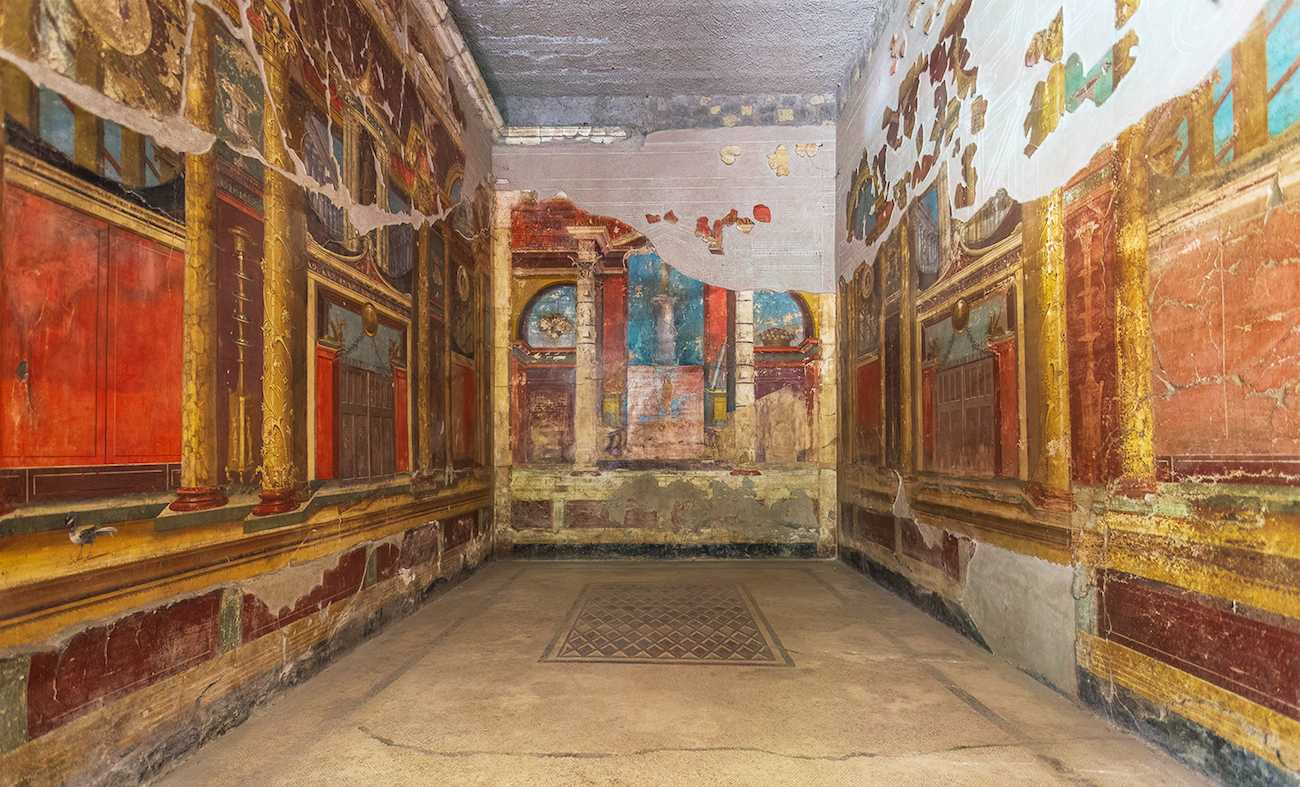
Among Vesuvian archaeological sites there is also Oplontis which is divided into two structures: the luxurious residential complex of Villa Poppea and the other, not open to the public, the business center owned by Crassius Tertius which dealt with agricultural products, particularly wine and oil. The Villa built in the mid-1st century B.C. and then enlarged during the early Imperial Age, according to an inscription painted on an amphora, could have belonged to Poppaea. In the past, the villa overlooked the sea offering a panoramic view, and boasted magnificent décor, some exceptional traces of which are still preserved today. The villa is included in the UNESCO heritage listing “Archaeological Areas of Pompeii, Herculaneum, and Torre Annunziata”.
Vesuvio
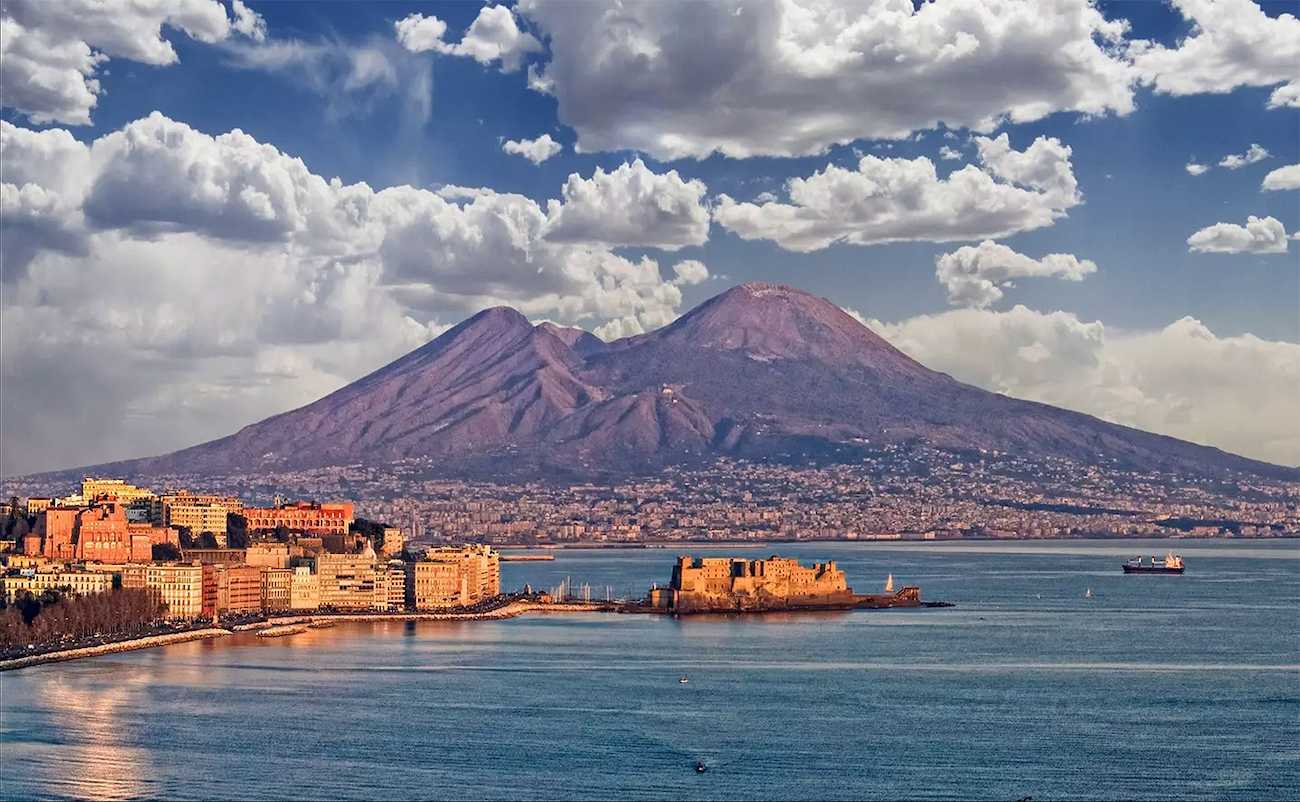
Located near a densely populated region with over three million inhabitants, Mount Vesuvius stands as one of the world's most dangerous volcanoes. This stratovolcano, born from the remnants of the ancient Mount Somma, reaches a height of 1,281 meters (4,203 ft), though its peak fluctuates after major eruptions. Dormant for centuries, Vesuvius erupted violently in 79 AD, burying Pompeii, Oplontis, Stabiae, and Herculaneum under ash and mudflows. A magnet for the adventurous, climbing Vesuvius became a peculiar tourist attraction in the 17th century, drawing visitors from northern Europe eager to witness a volcano firsthand. Scientific curiosity blossomed in the late 18th century, leading to the establishment of an observatory, a subterranean laboratory, and numerous monitoring stations. Before the 1631 eruption, the crater boasted lush forests and three lakes, frequented by grazing herds. Today, Vesuvius' fertile slopes teem with vineyards and orchards, producing grapes for the famed Lacrima Christi wine – "tears of Christ" in Latin.
Vesuvio vs Etna
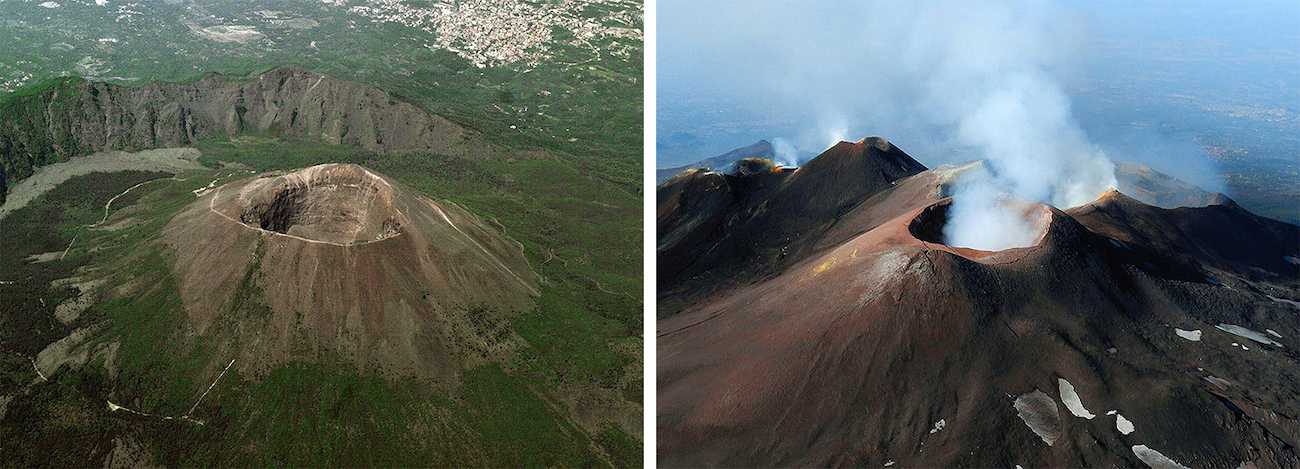
Vesuvius currently lies in a quiescent state, its crater plugged by solidified material. However, if it transitions to an eruptive phase, it will likely unleash violent explosions spewing hot rocks, ash clouds, and devastating pyroclastic surges reaching temperatures of 300°C (572°F). In contrast, Mount Etna exhibits ongoing eruptive activity, typically characterized by effusive eruptions. These eruptions involve the relatively gentle outpouring of lava flows, often from both the summit craters and fissures along its flanks. While disruptive, these eruptions rarely cause widespread damage.
8th Leg: Moving to Naples
A Day in Naples
Morning
- Meet at 8:00 to drive to Naples.
- Guided tour of the MANN, the Naples National Archeological Museum. Thanks to the rich and valuable heritage of works of art and artifacts, the MANN is considered one of the most important archaeological museums in the world and the most important in regards to ancient Roman culture.
Afternoon
- Guided tour in Naples historic center.
Welcome Aperitif.
Dinner at the hotel.
Napoli
Steeped in a rich 27-century history, Naples boasts the largest historic center in Italy, surpassing even Rome. Founded by Greek settlers in the 8th century BC, the city's core showcases its heritage through layers of architecture. From the noble villas of Posillipo and Vomero, built during the 19th-century expansion, to the ancient heart recognized as a UNESCO World Heritage Site in 1995, Naples is a living museum. The BBC aptly described it in 2017 as "the Italian city with too much history to manage." Spaccanapoli (split Naples) is the city's most famous and picturesque street and it divides the historic center into north and south. To truly capture Naple's soul, one must wander down San Gregorio Armeno street overflowing with artisan shops and the world-renowned nativity scenes. Among the must-see landmarks are Piazza del Plebiscito, a public square; the late 19th-century Galleria Umberto I, a stunning example of Liberty style; and Castel Nuovo, also known as Maschio Angioino, a former royal residence that housed dynasties like the Rulers of Anjou and the Bourbons. Two other important sites are Castel dell'Ovo, the city's oldest castle, and the monumental complex of Santa Chiara. This includes a monastery with four cloisters including the splendid majolica one, and the Sansevero Chapel Museum, housing the mesmerizing "Veiled Christ" sculpture with its seemingly woven marble veil.An Inevitable Thing, Like in the Movies: The End
The day of departure has arrived, some of you ready to fly back home and others to continue their holiday to new destinations.
For those who are going to the airport, rides to the airport, are available with a shuttle or with us.
We wish you a good return or a good continuation and we hope to see you soon and remember that following your first tour, you will receive a $200 credit for future trips with Tour With Us!
Home | Tours | Policies | Photos | About Us | Contact Us
CST # 2129817-40
Copyright ©2017 Tour With Us. All rights reserved.
Web Site Design: Landini Design, Inc.
